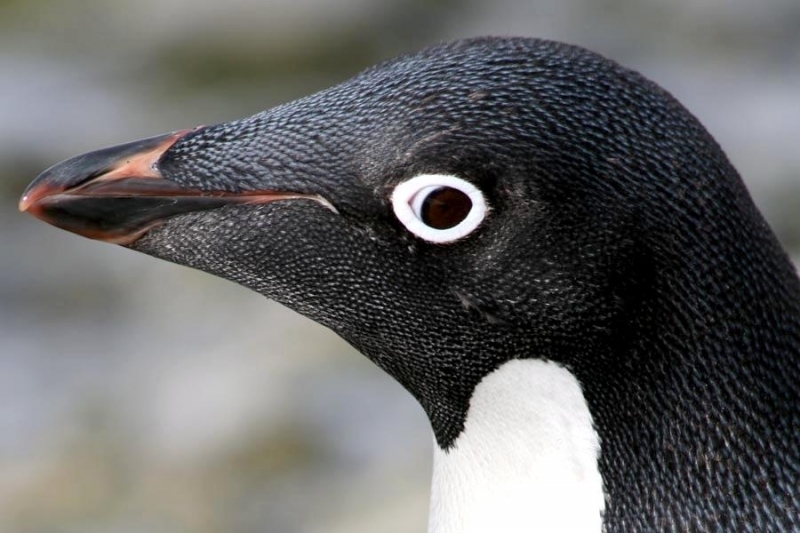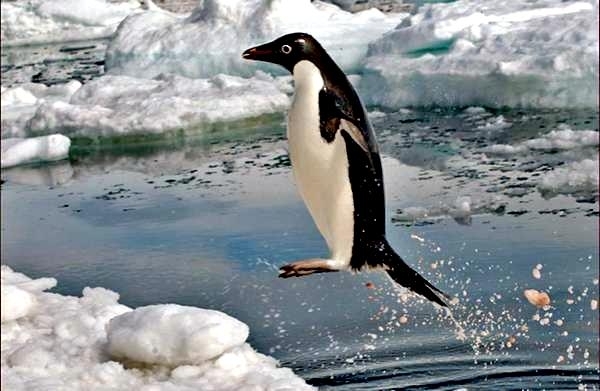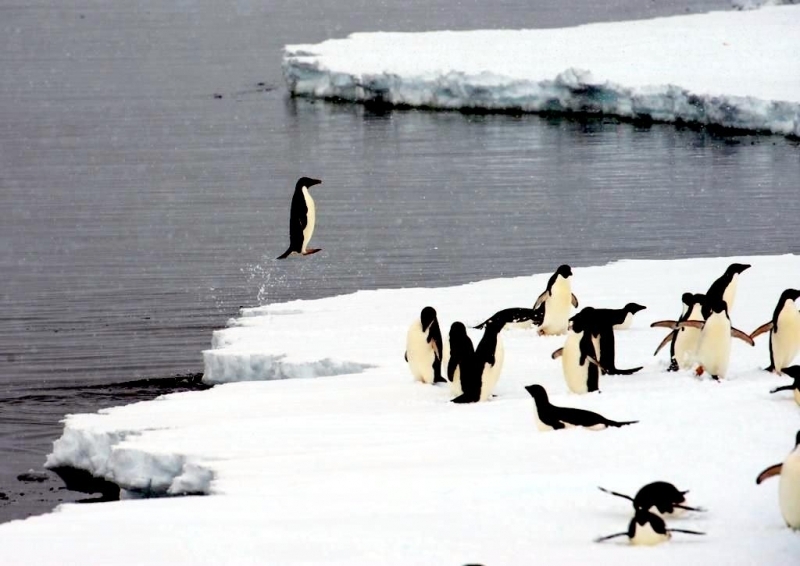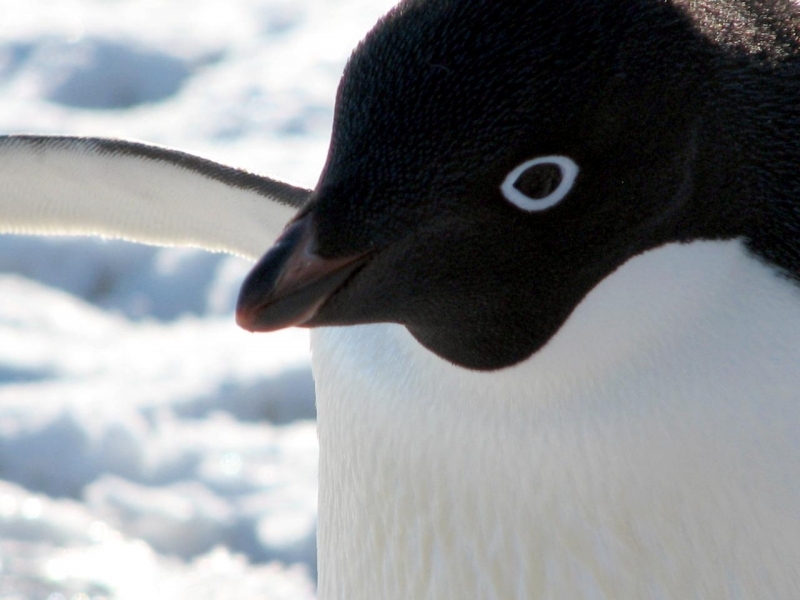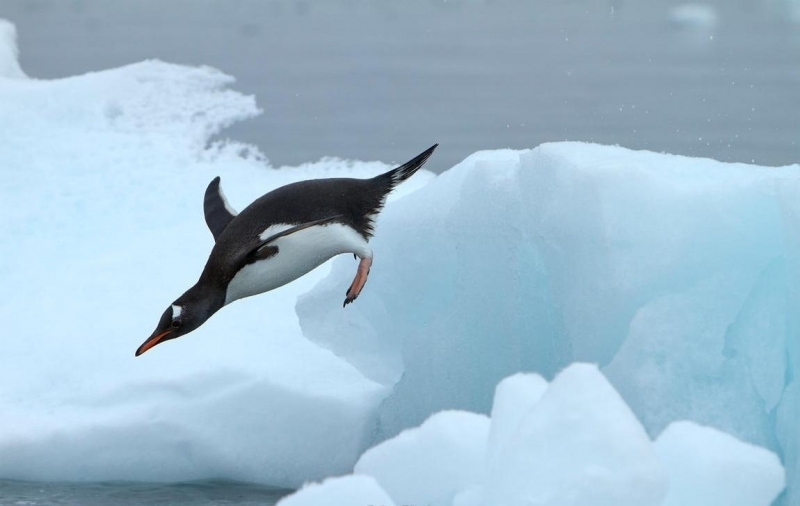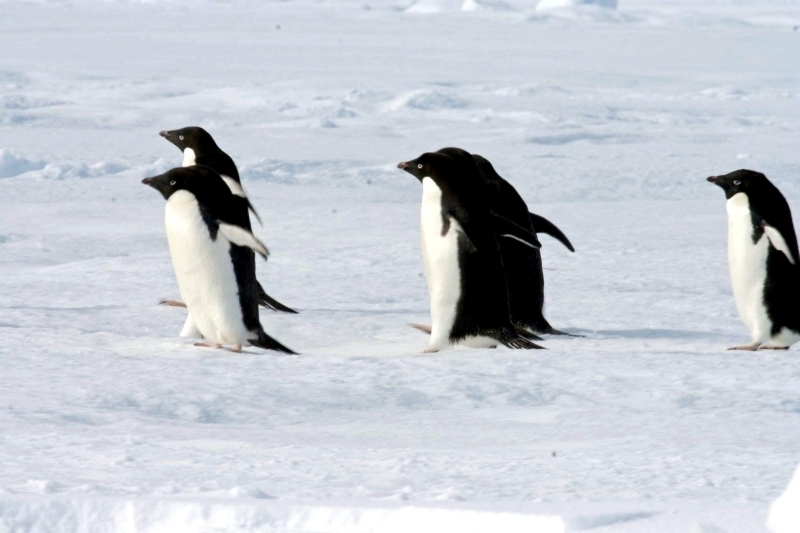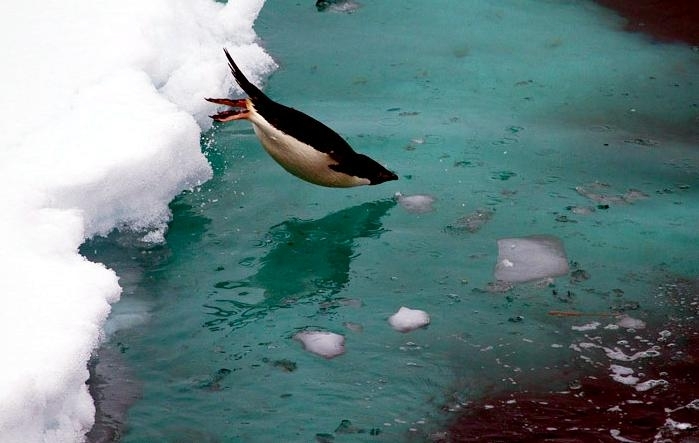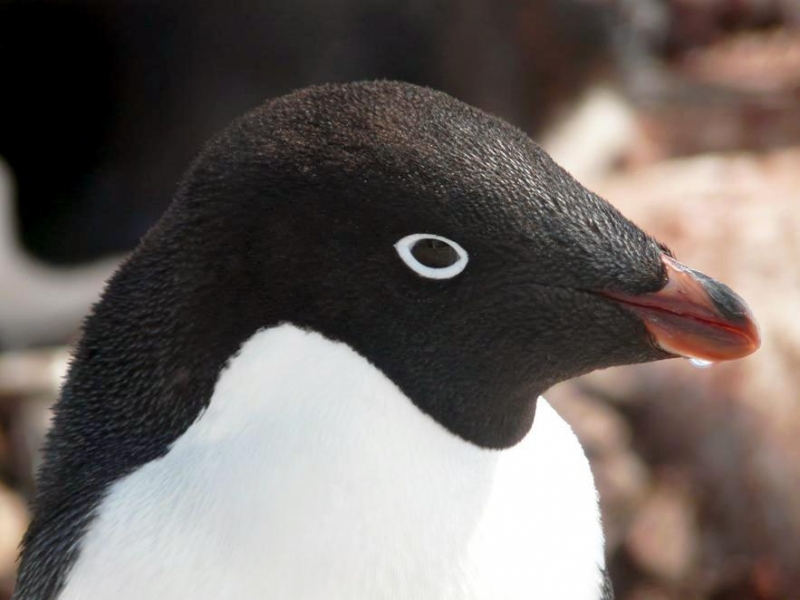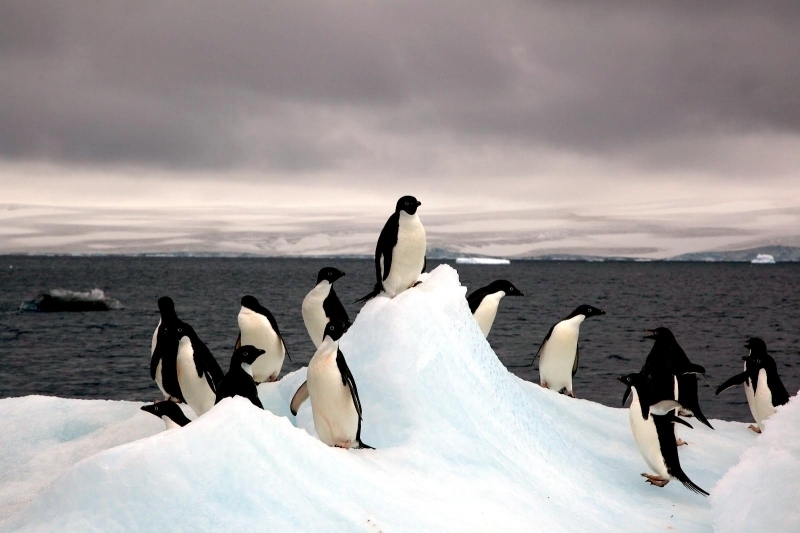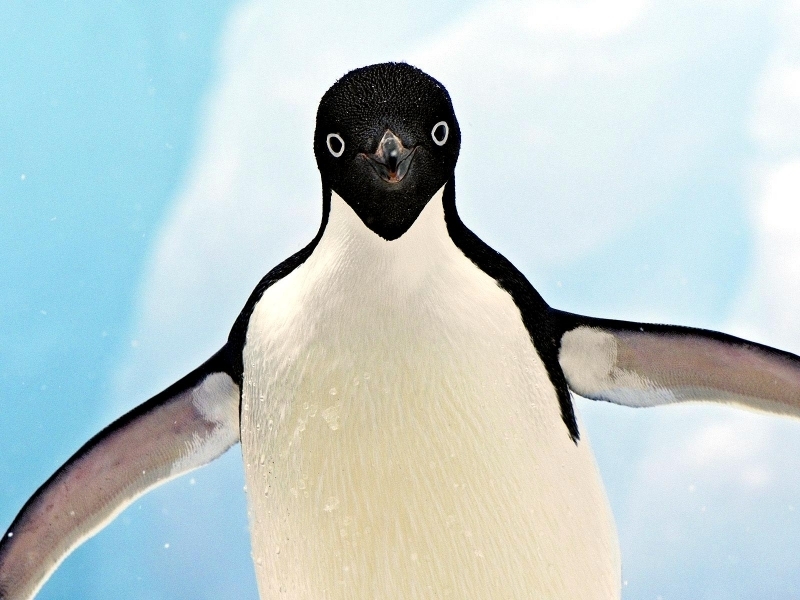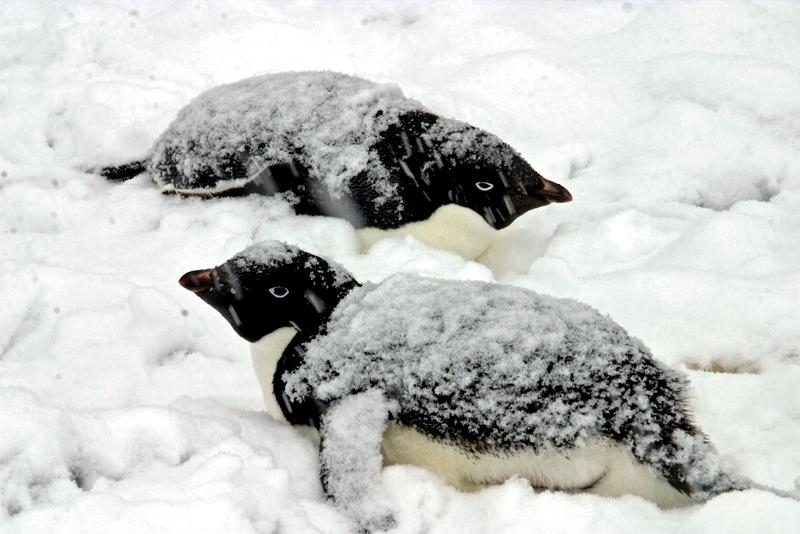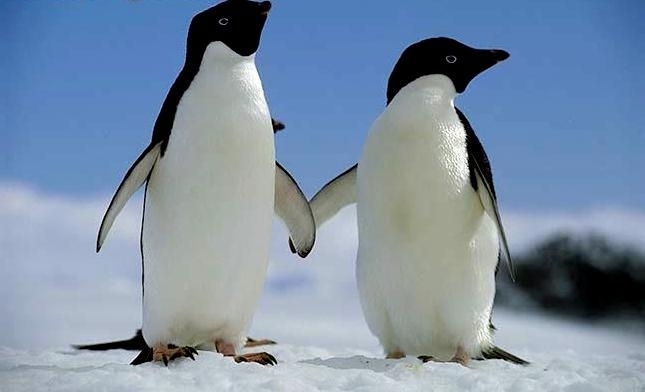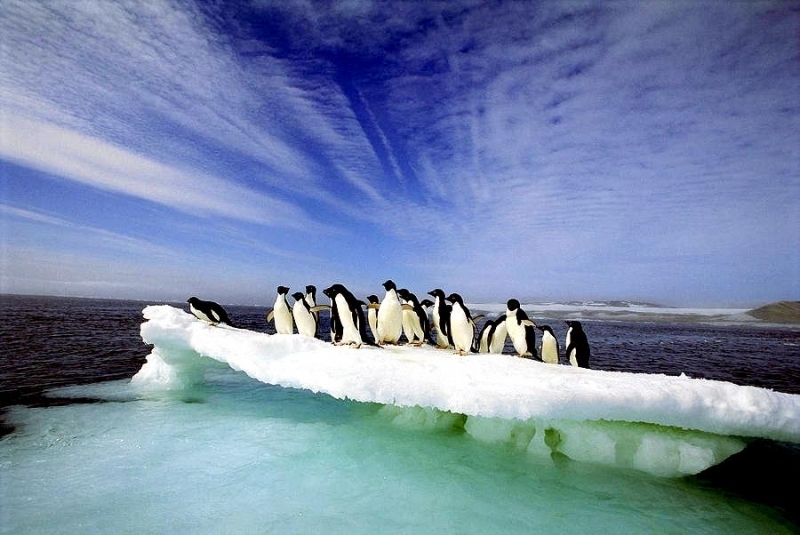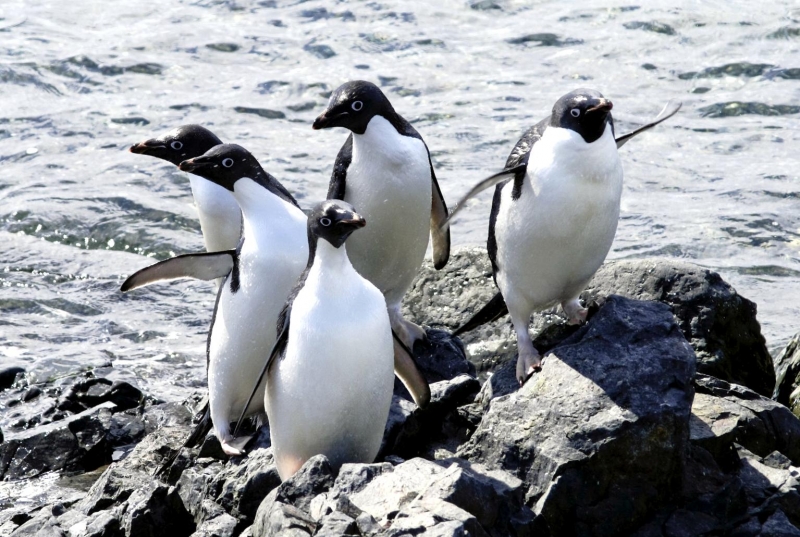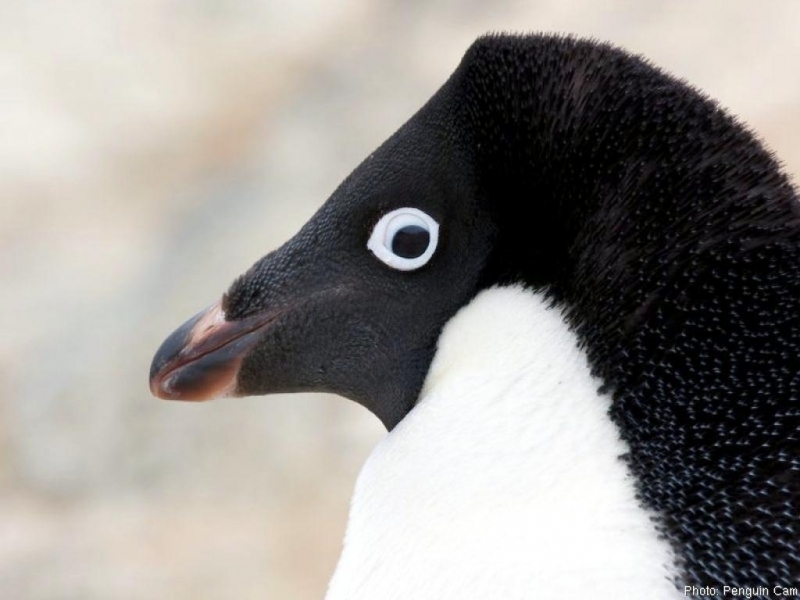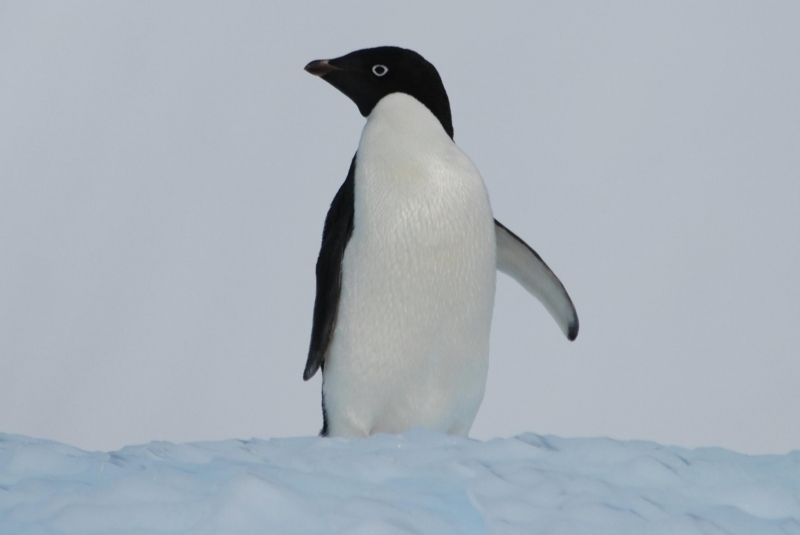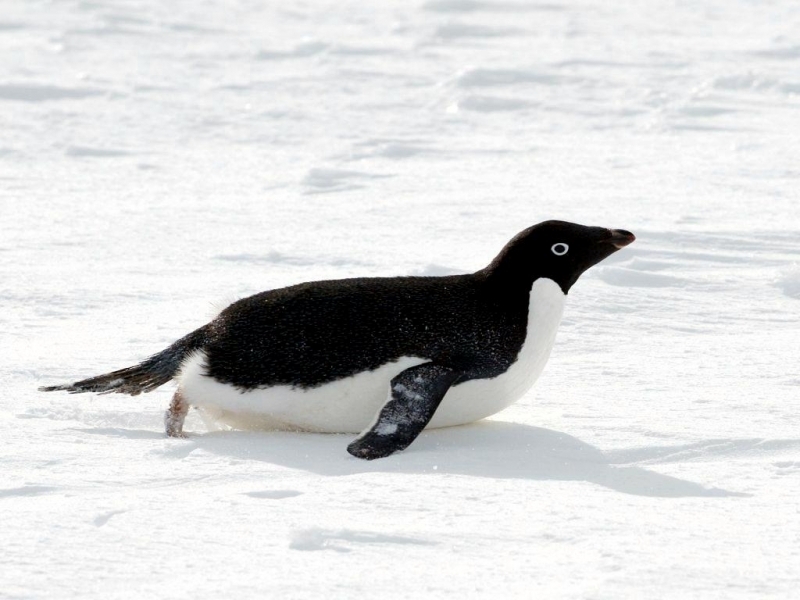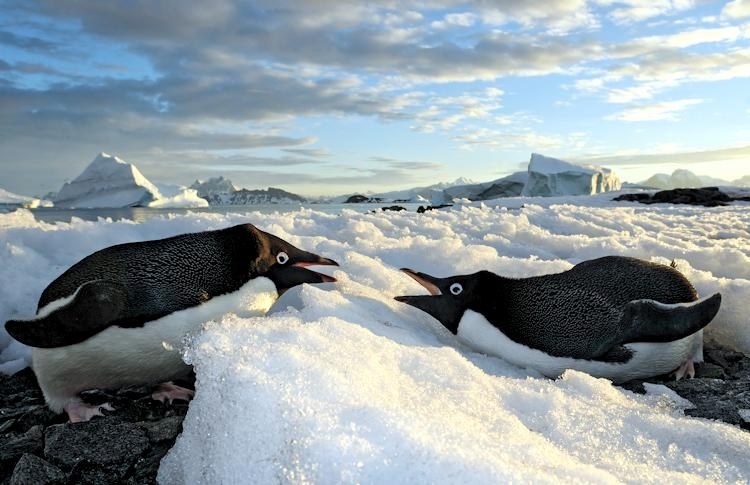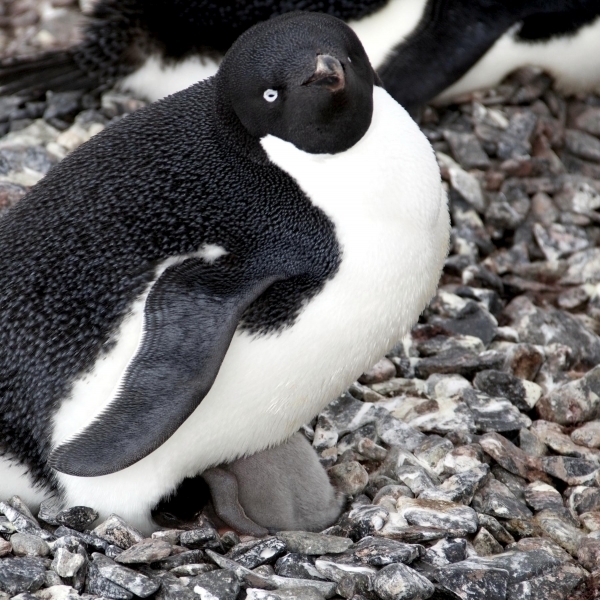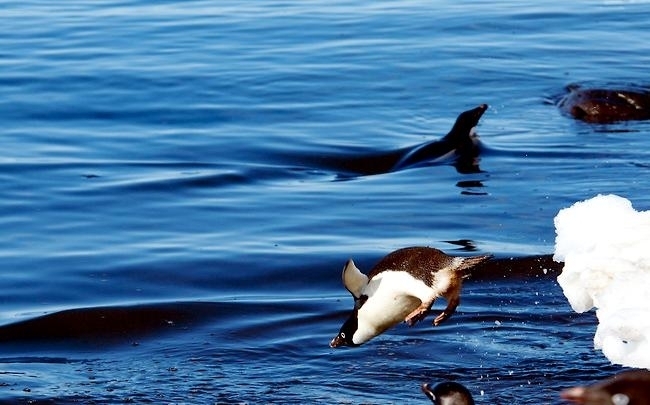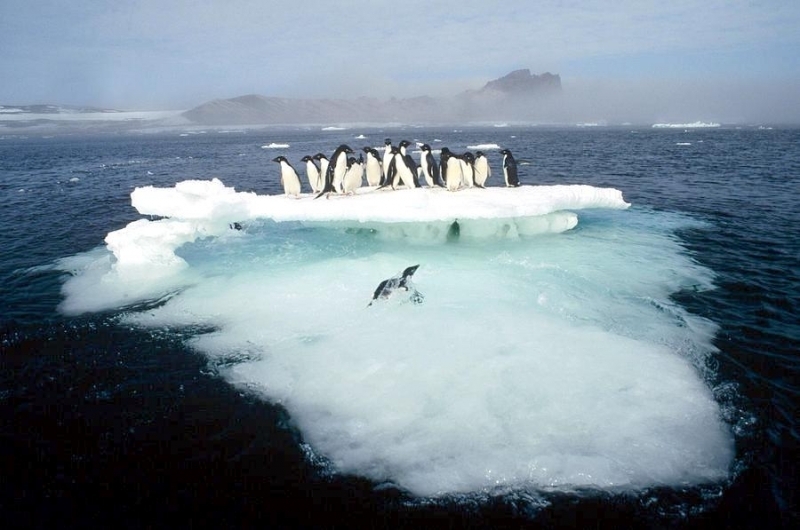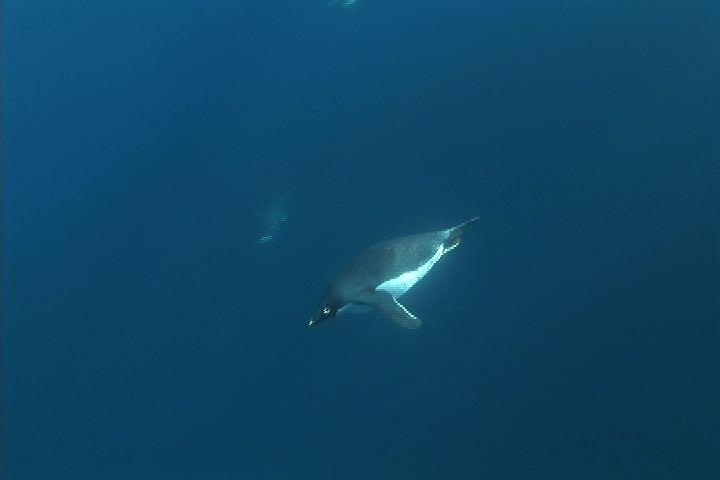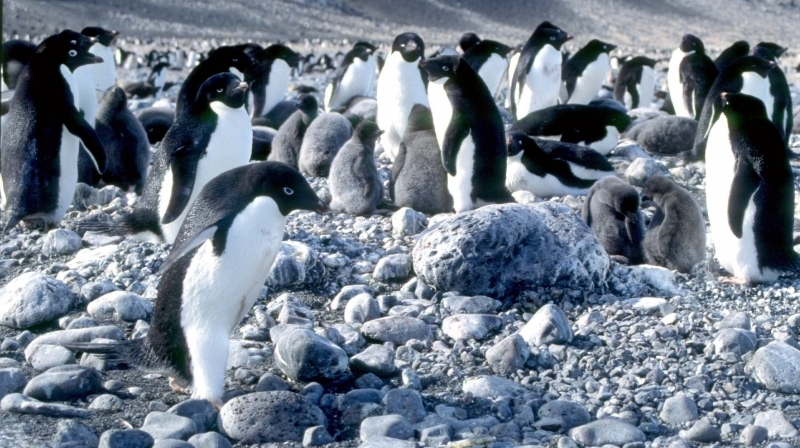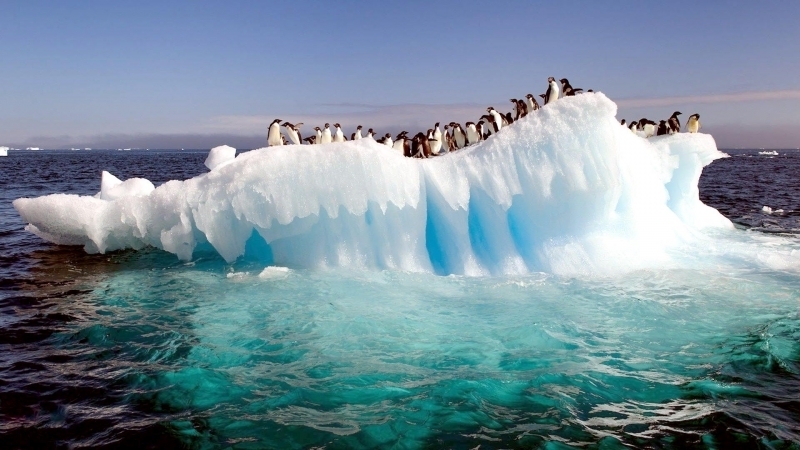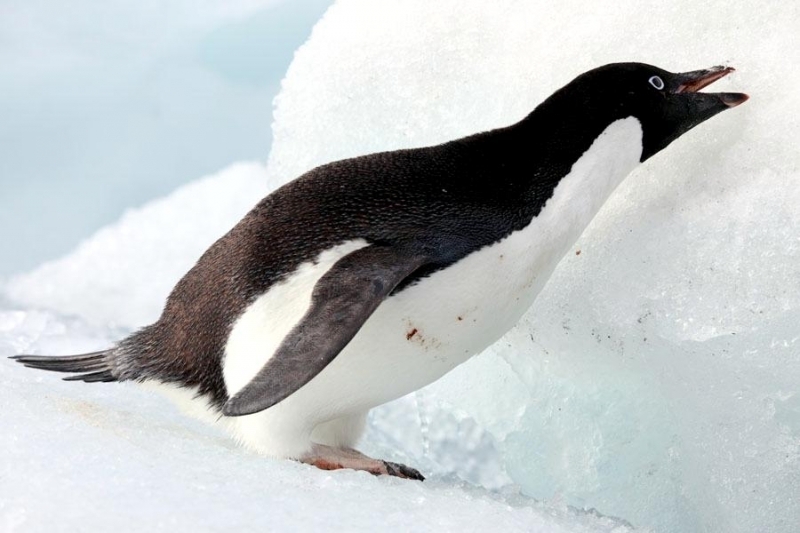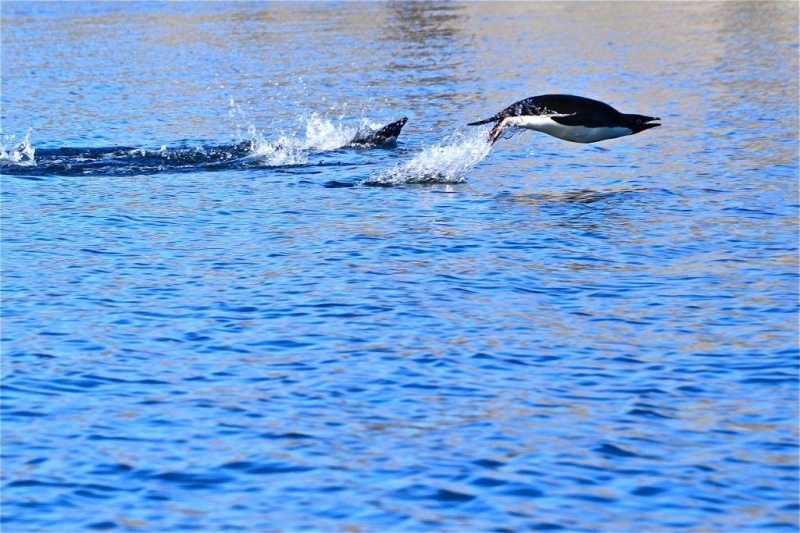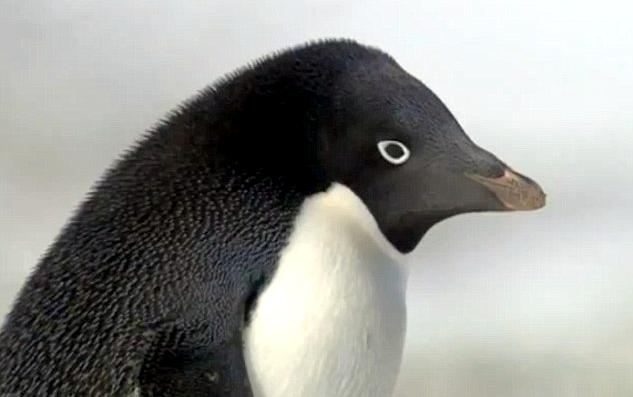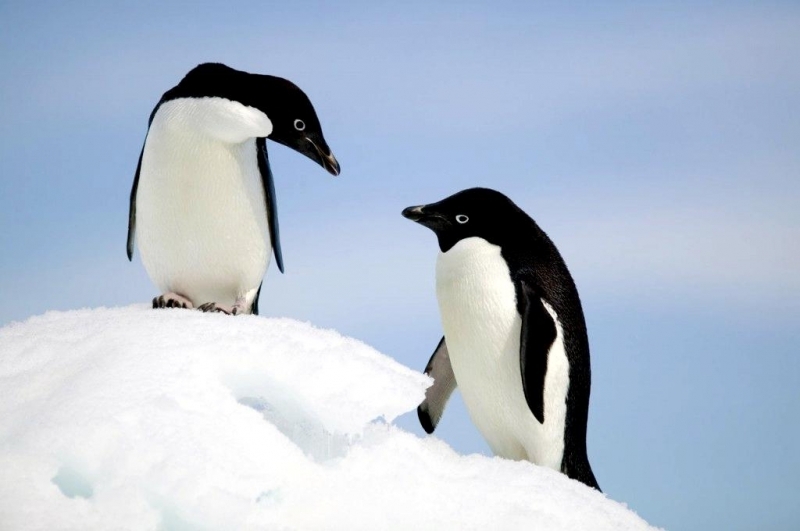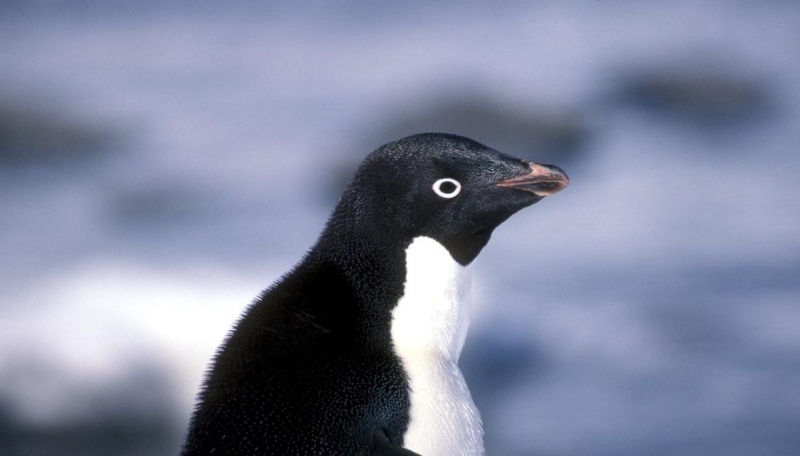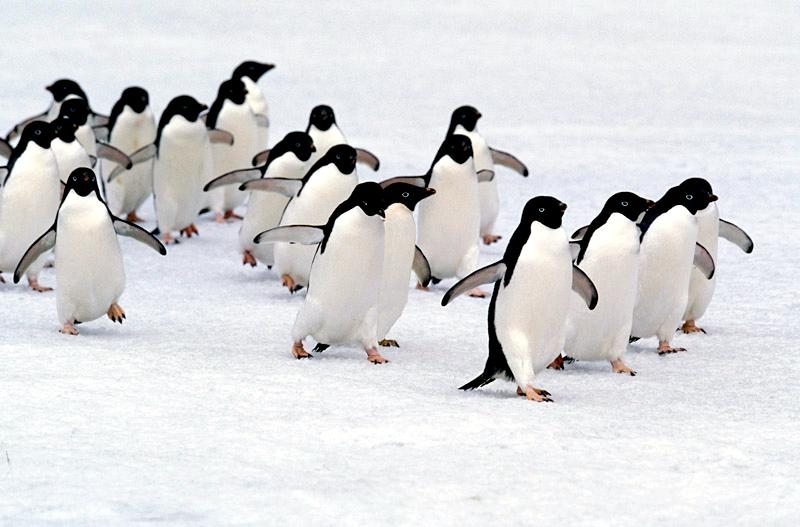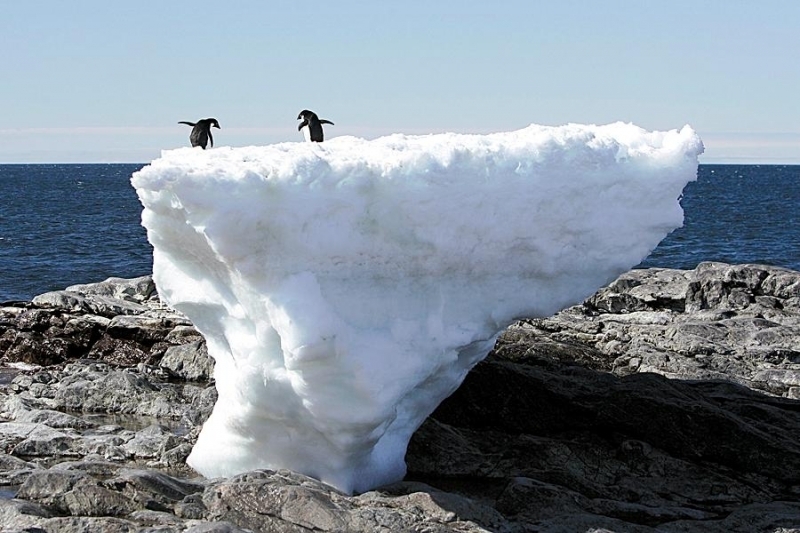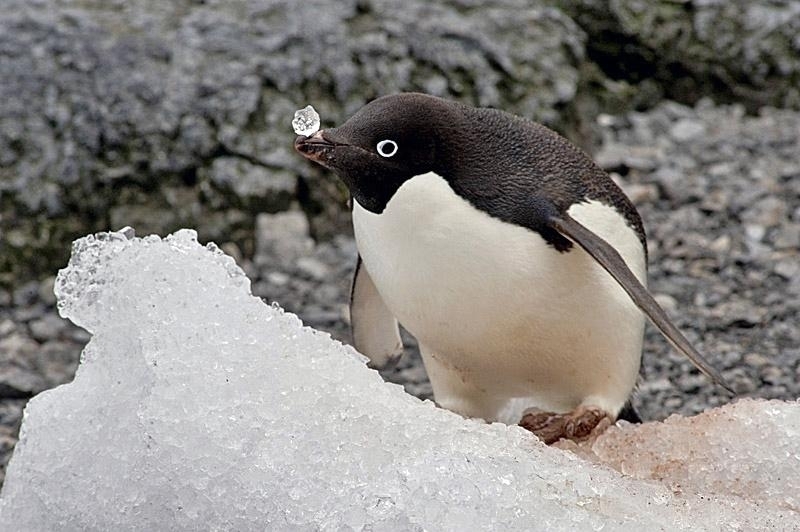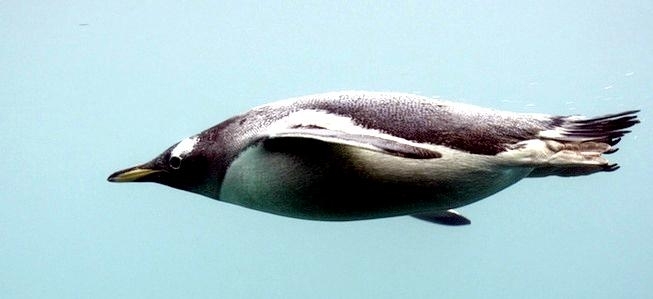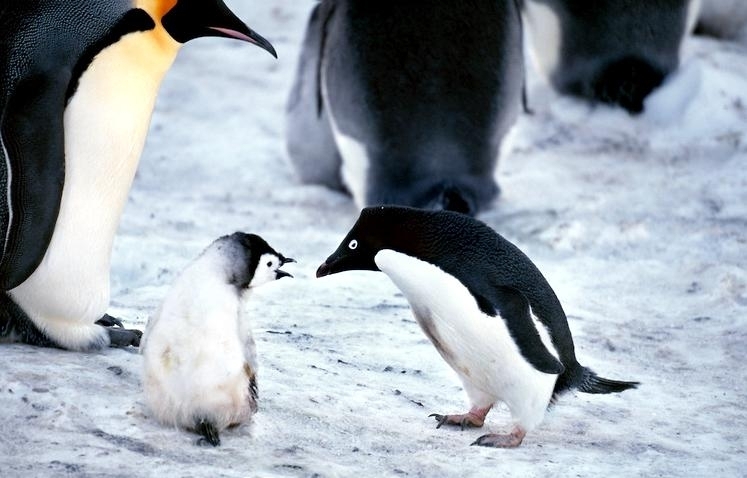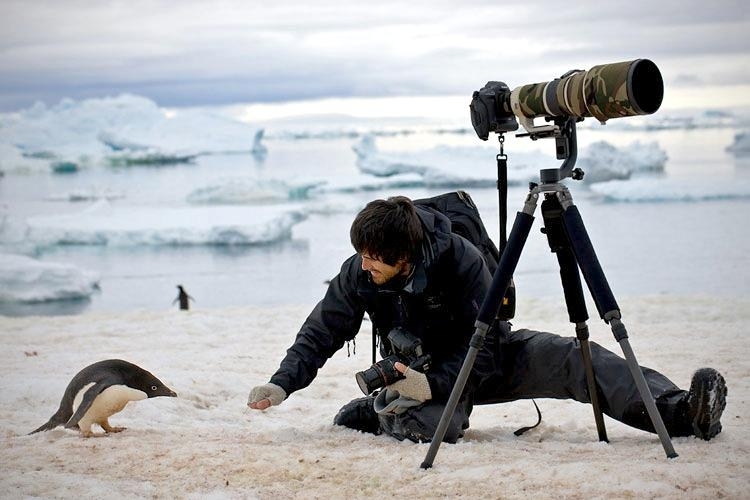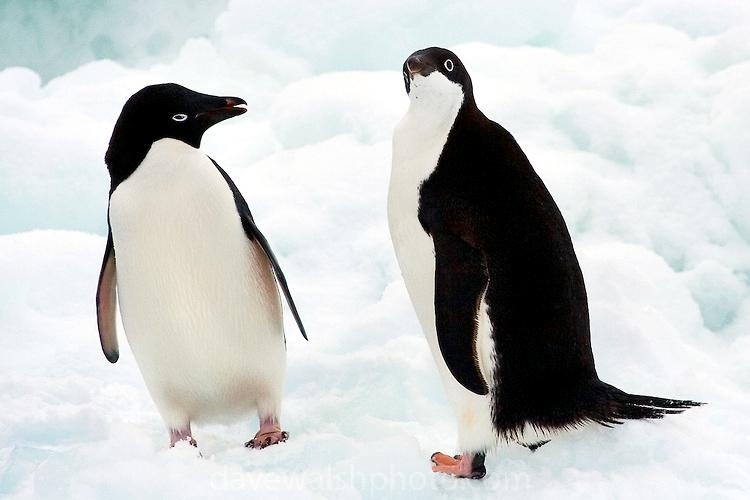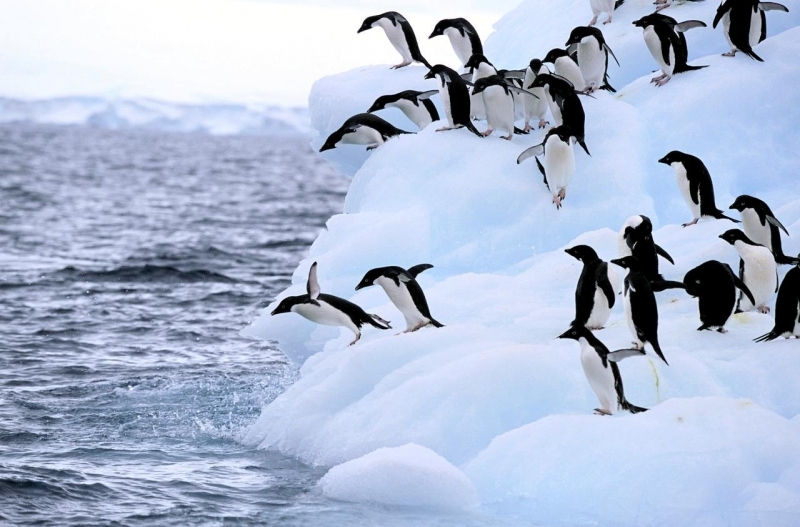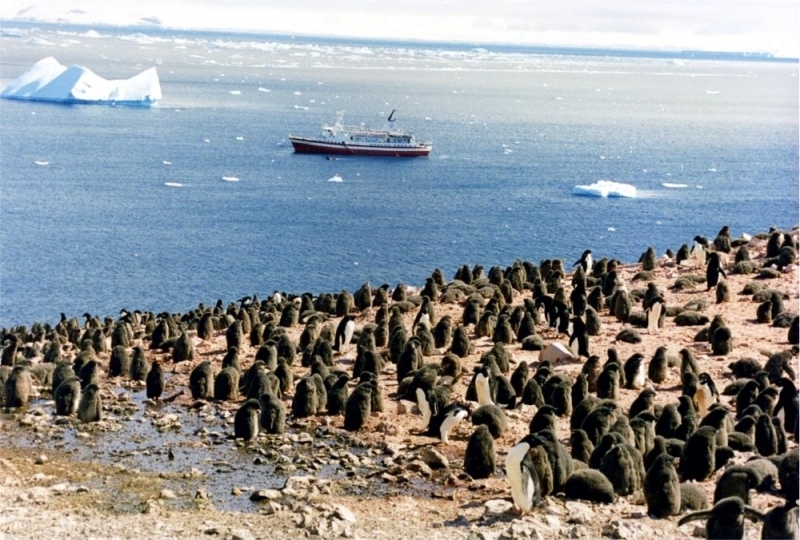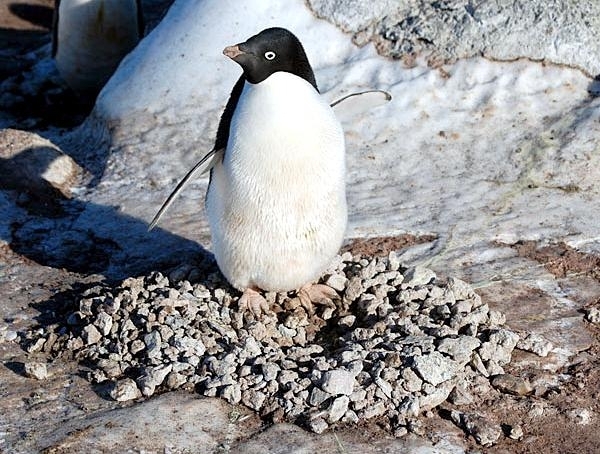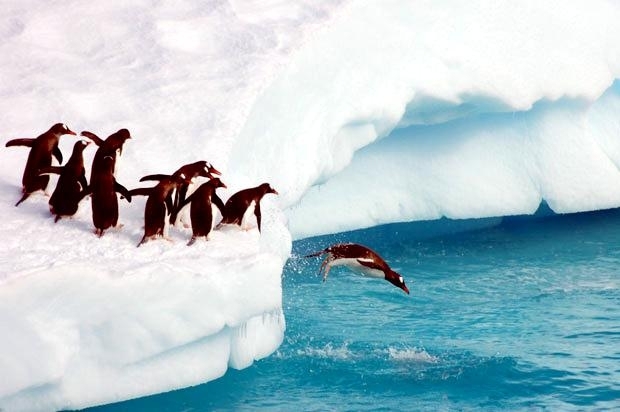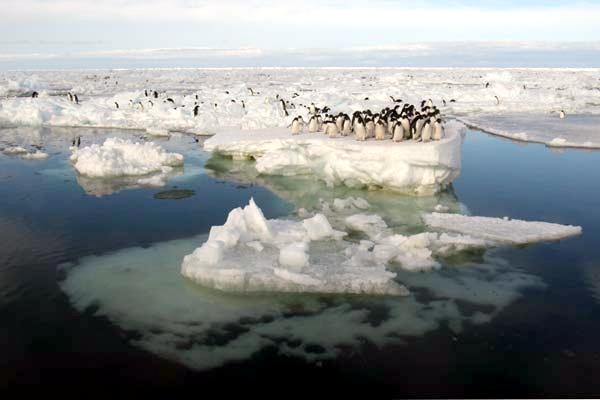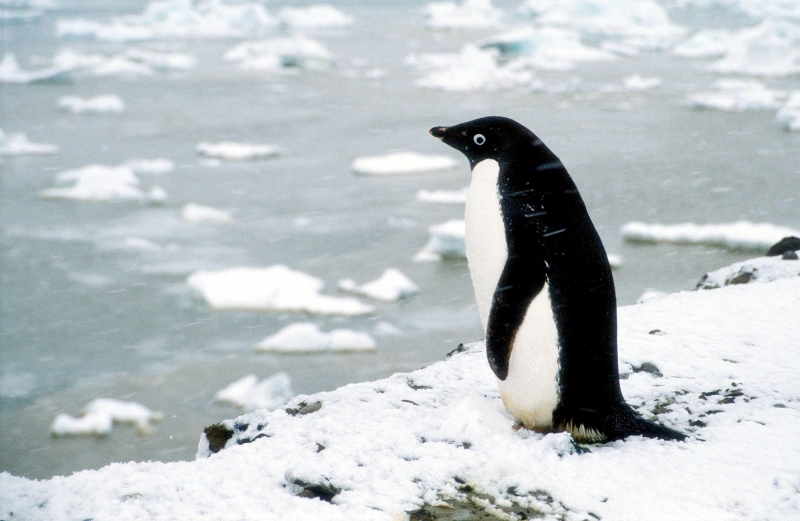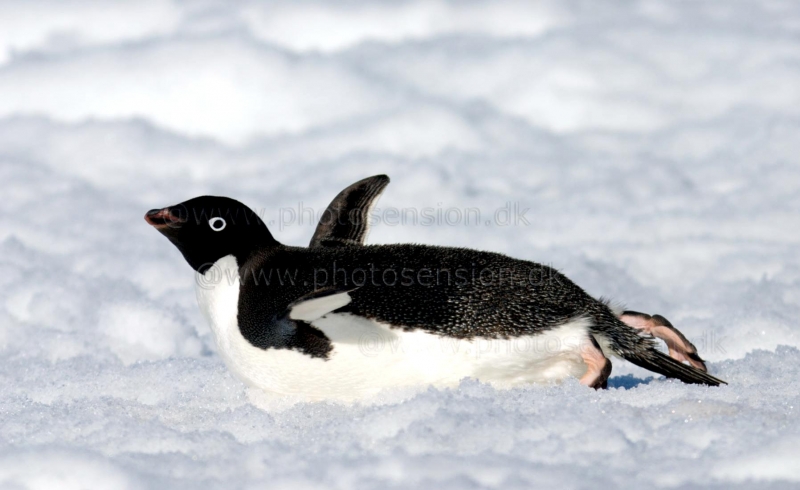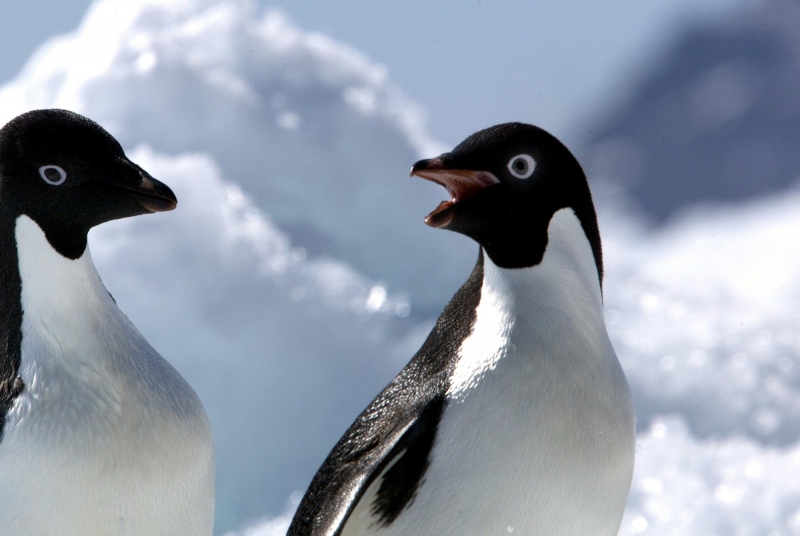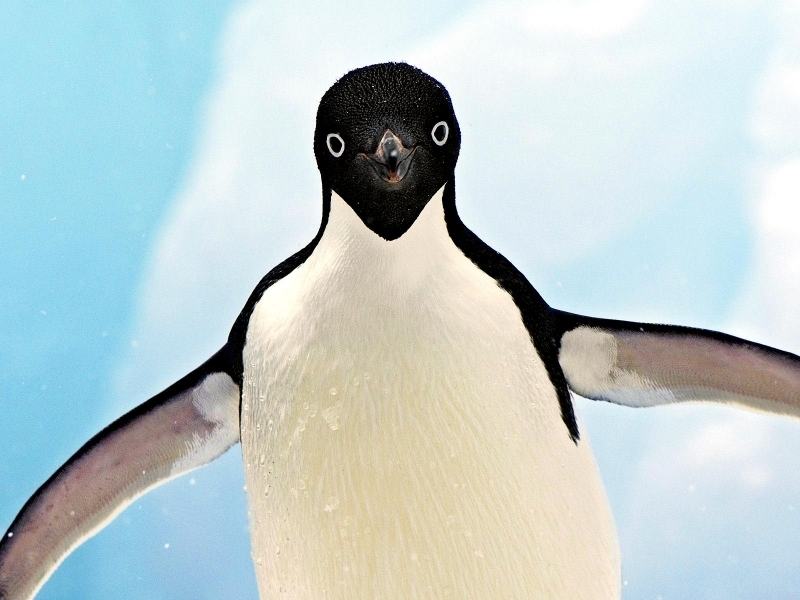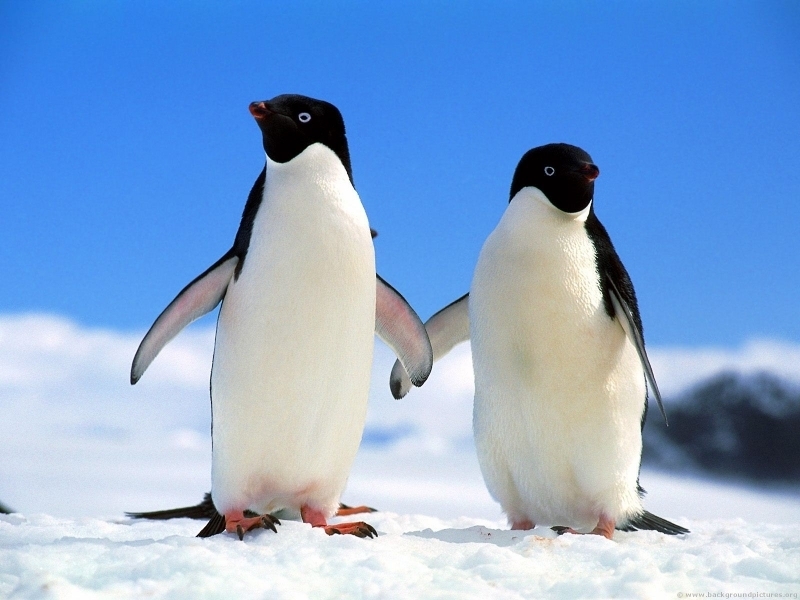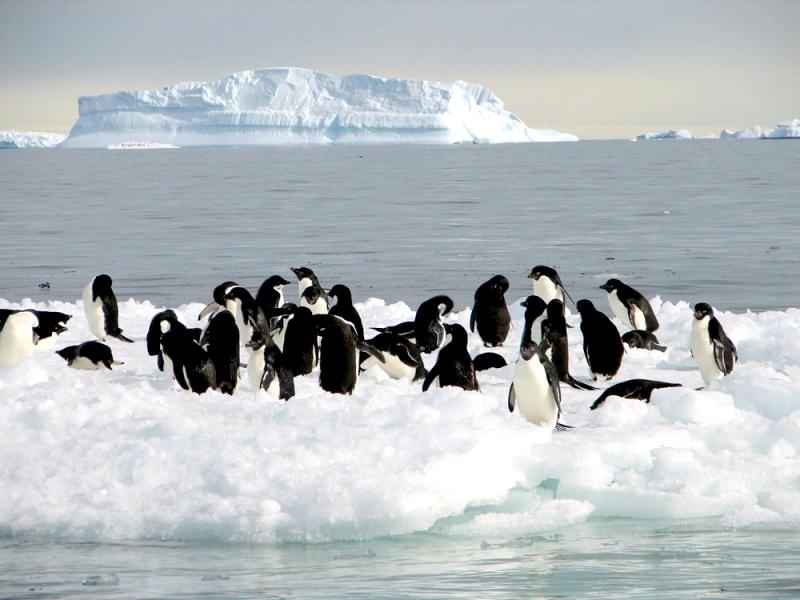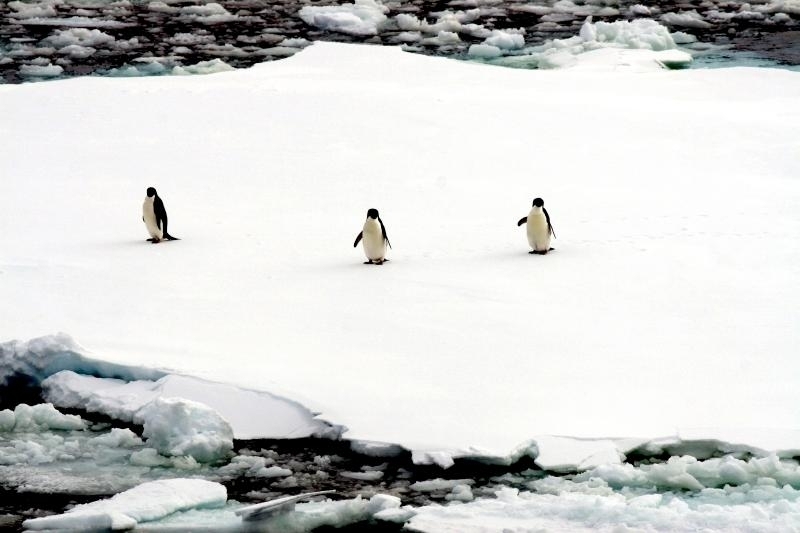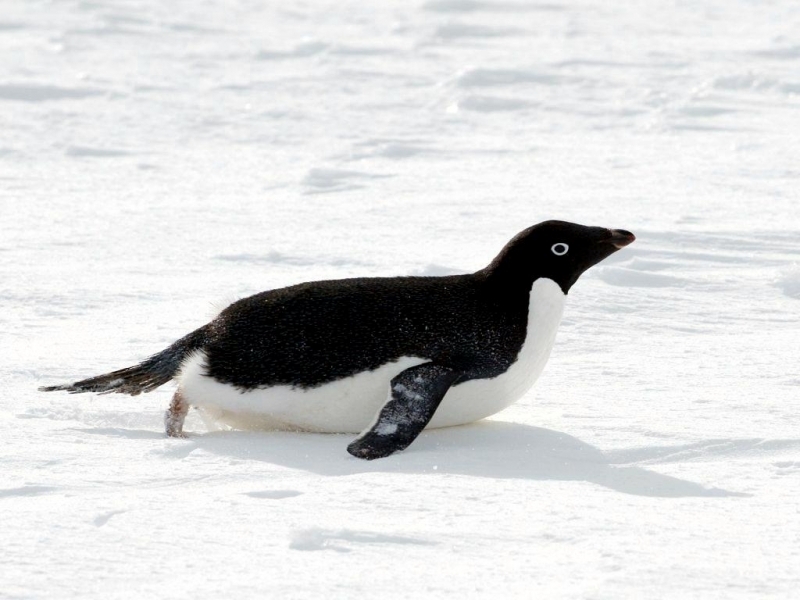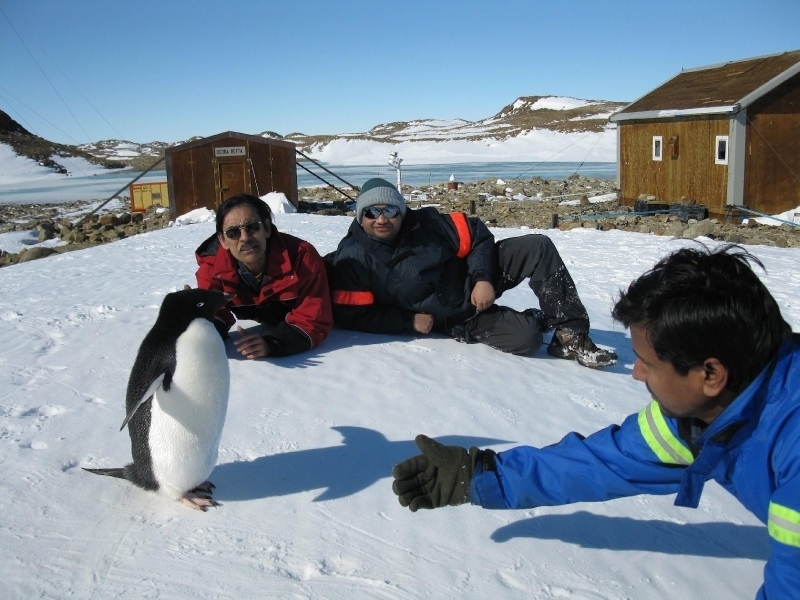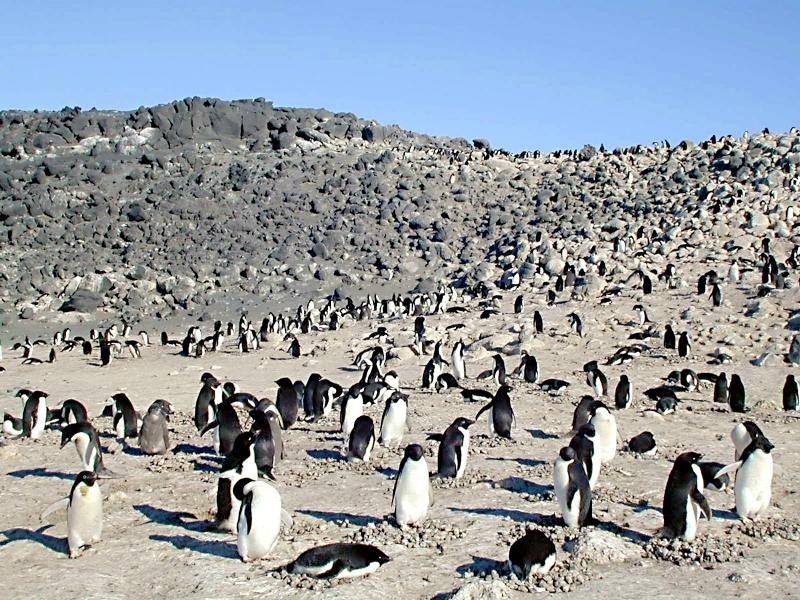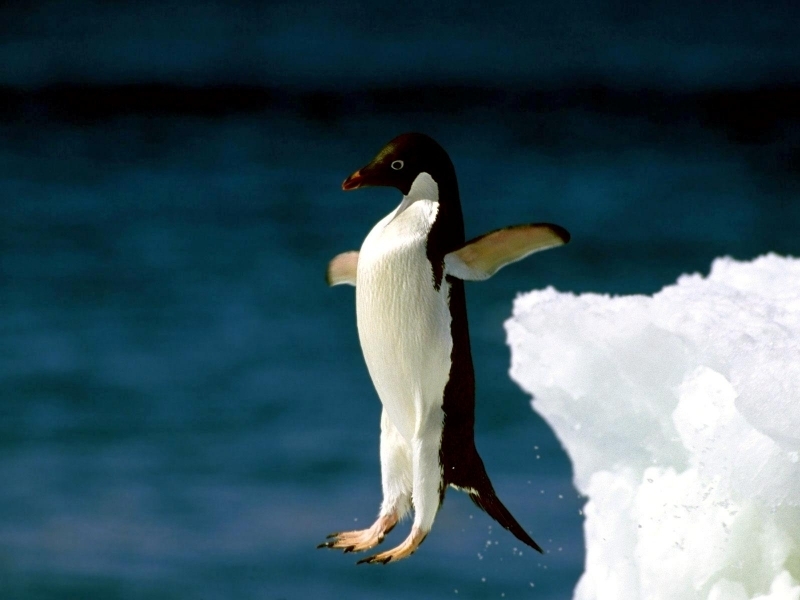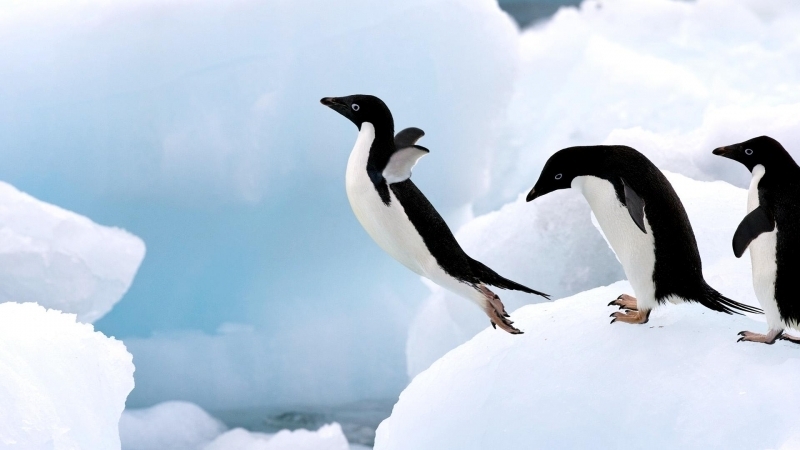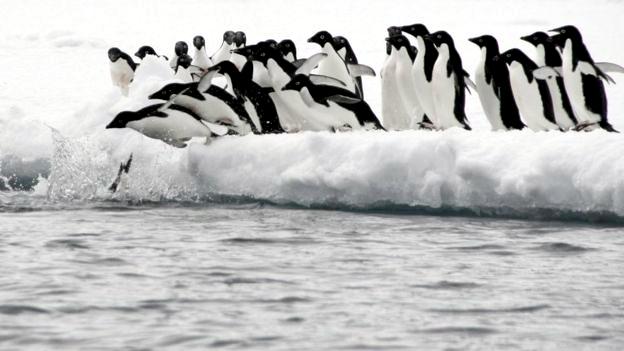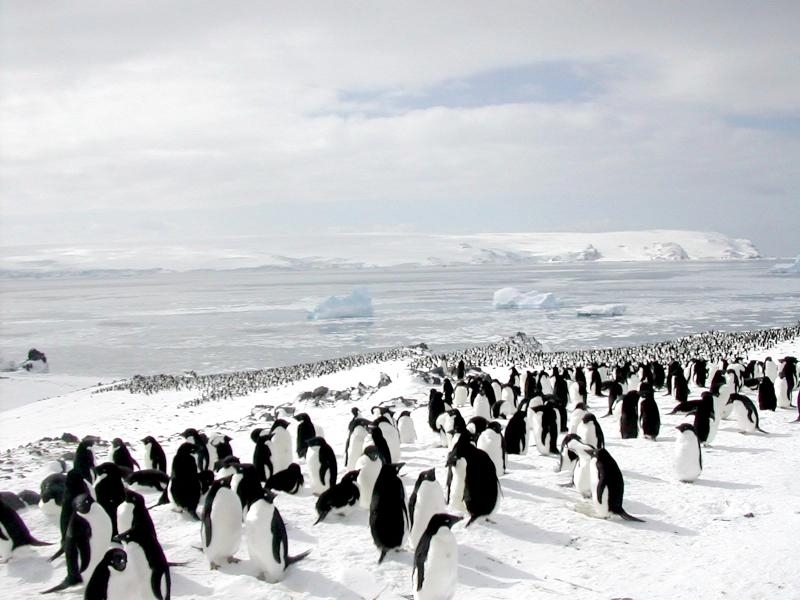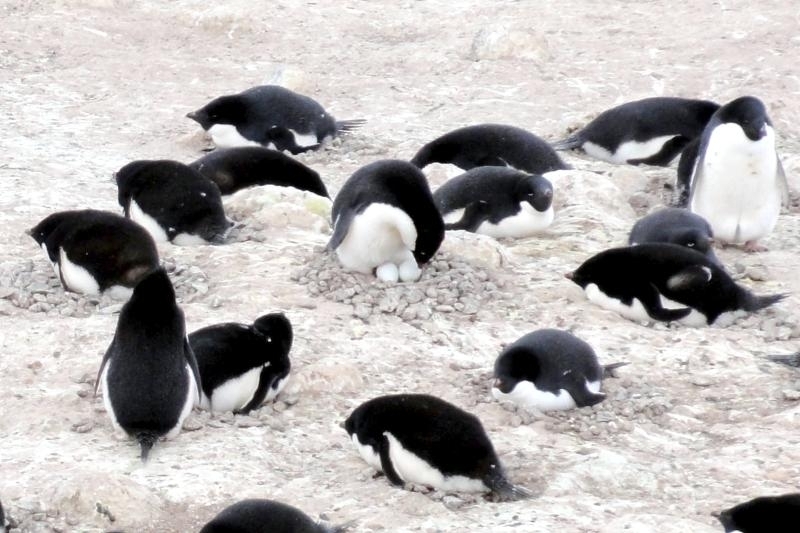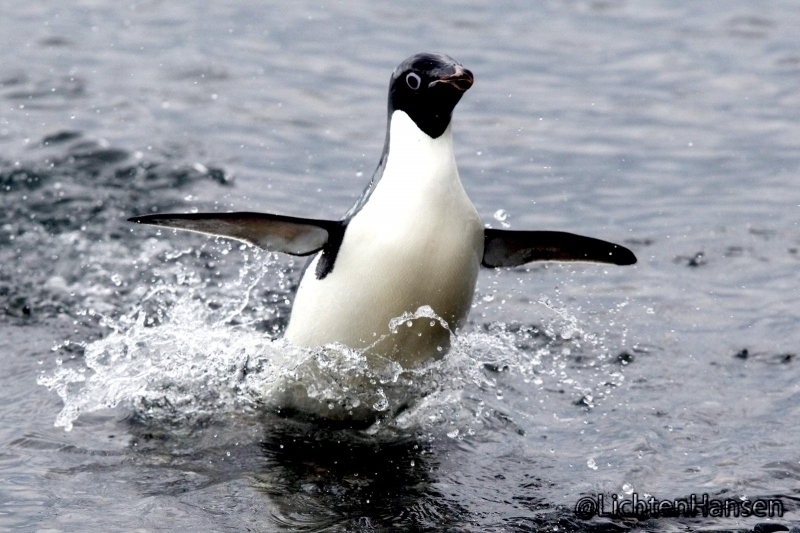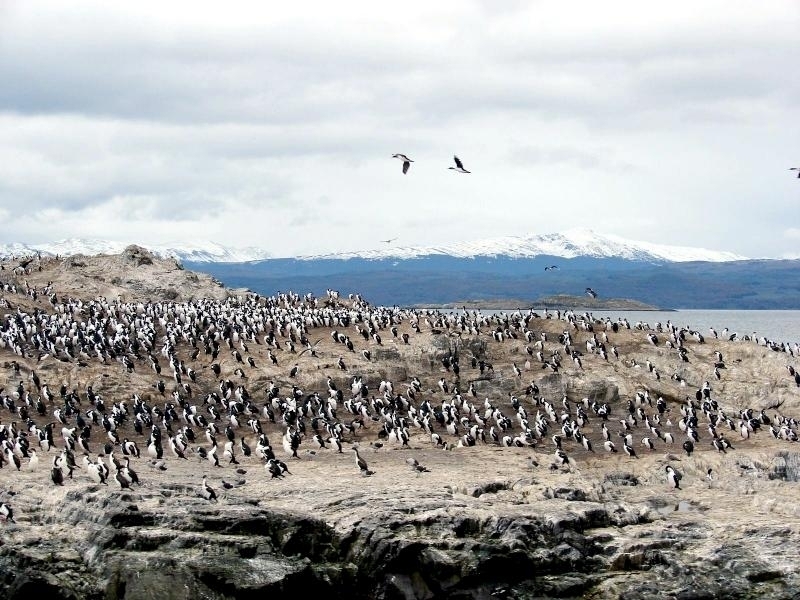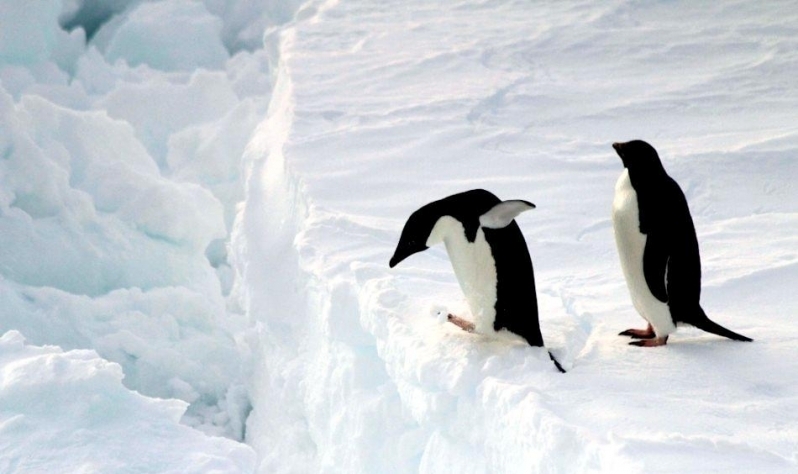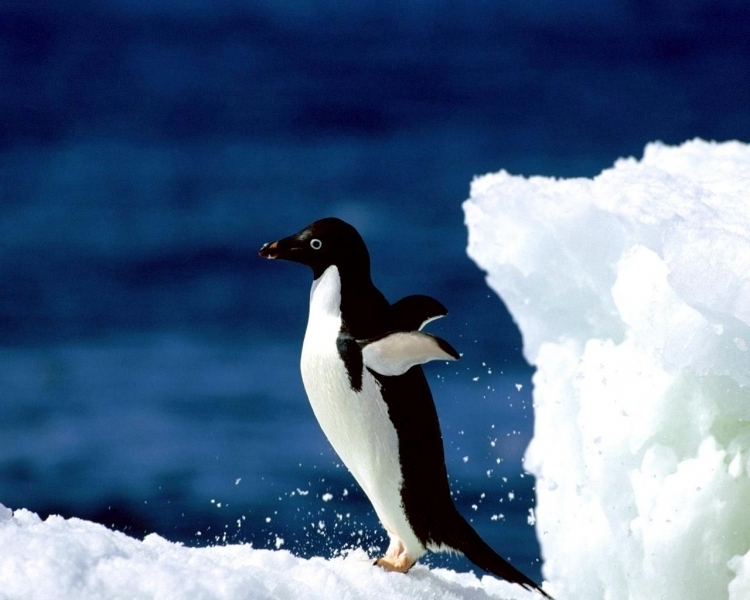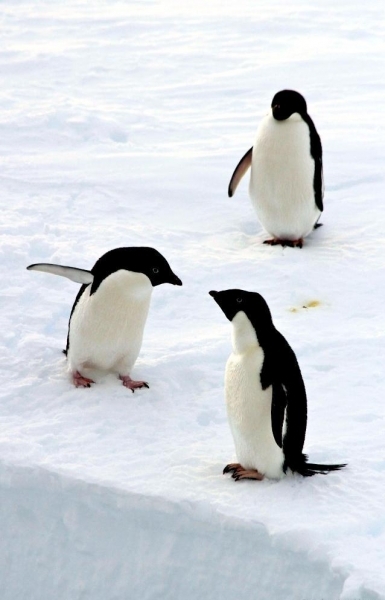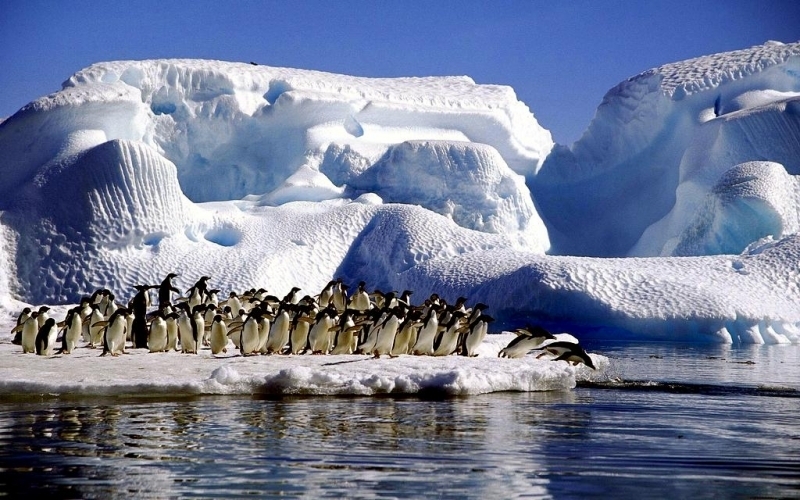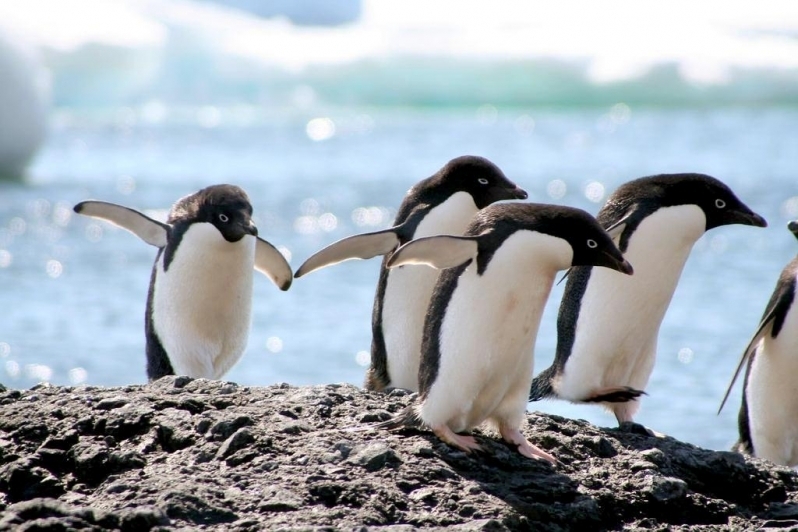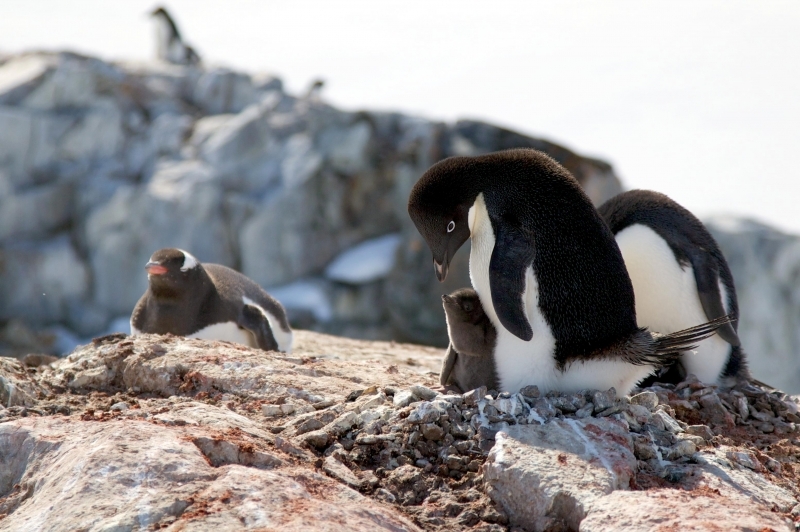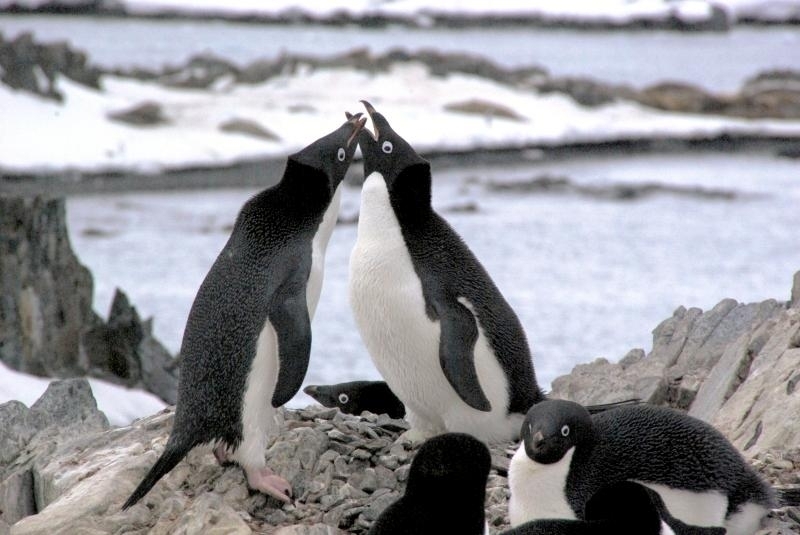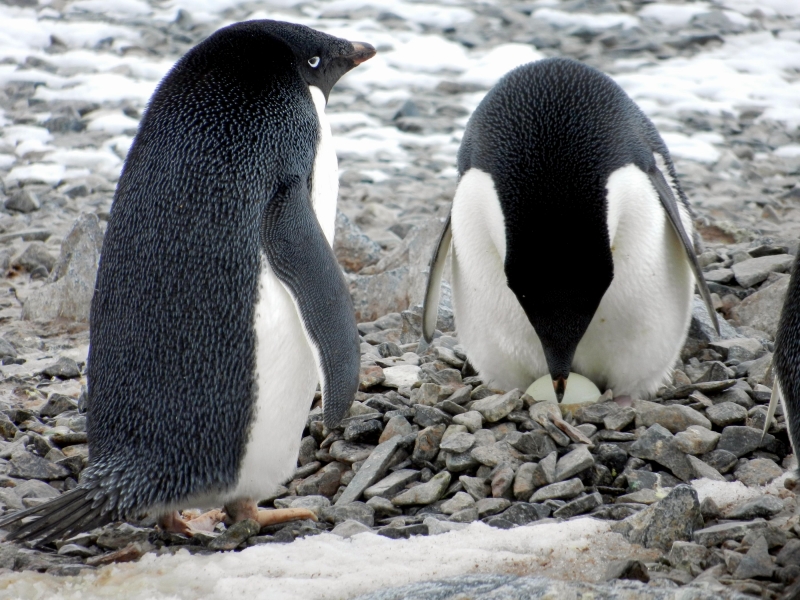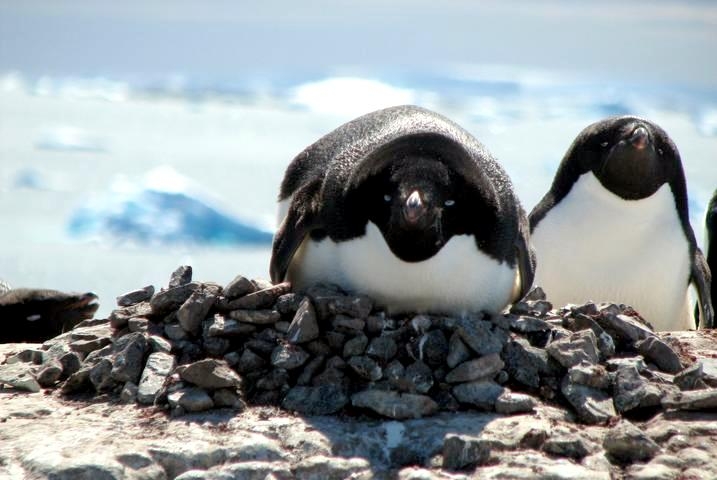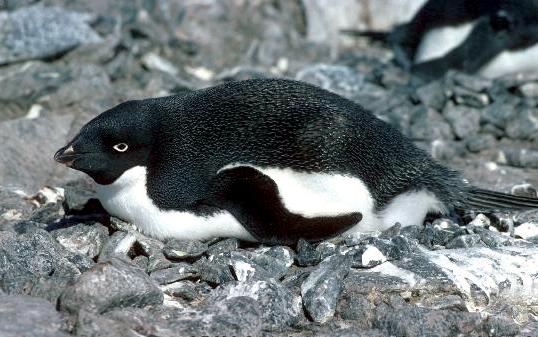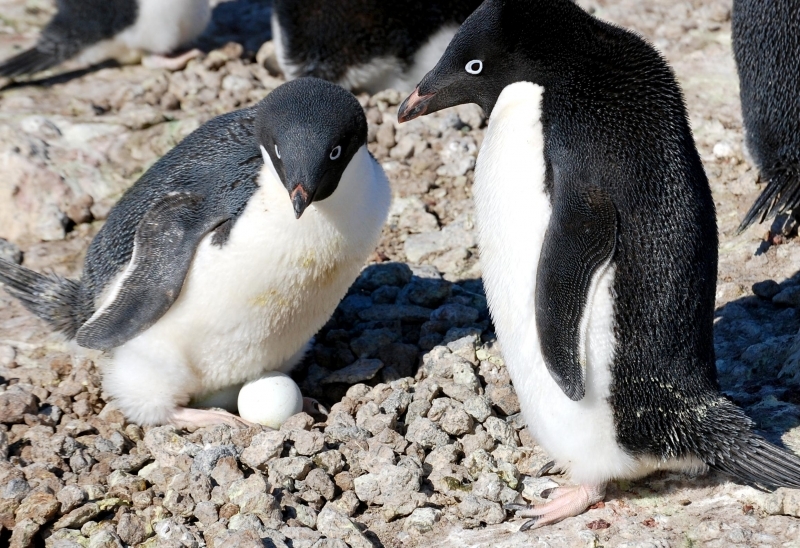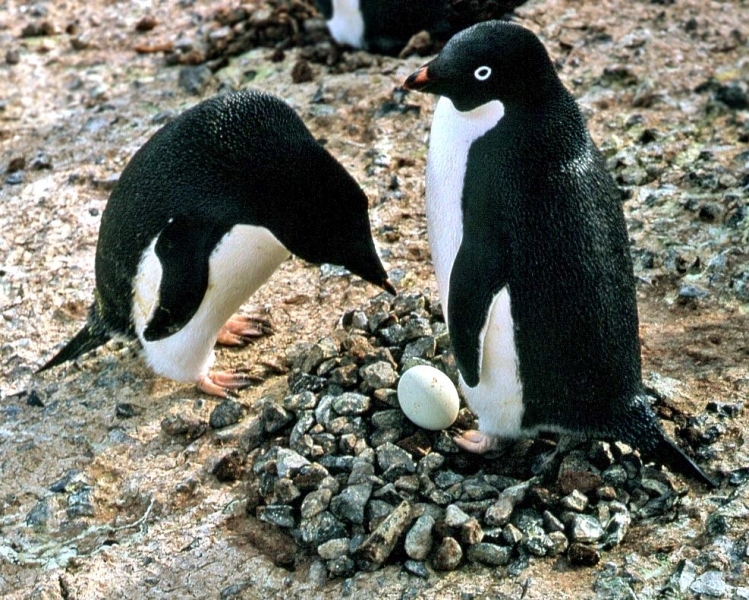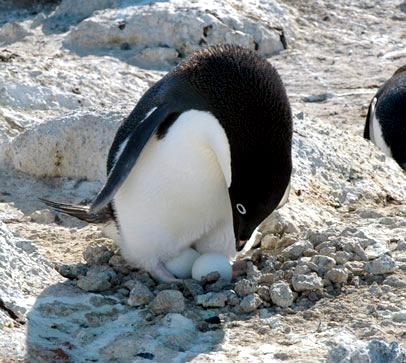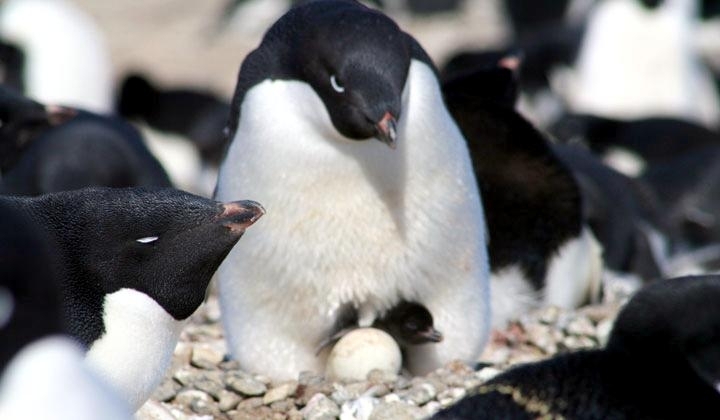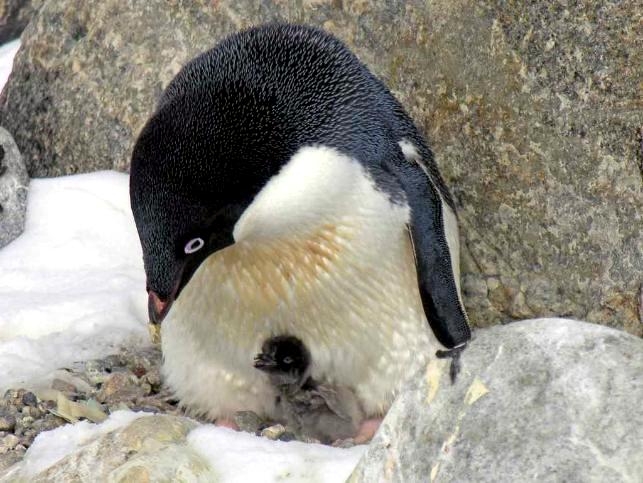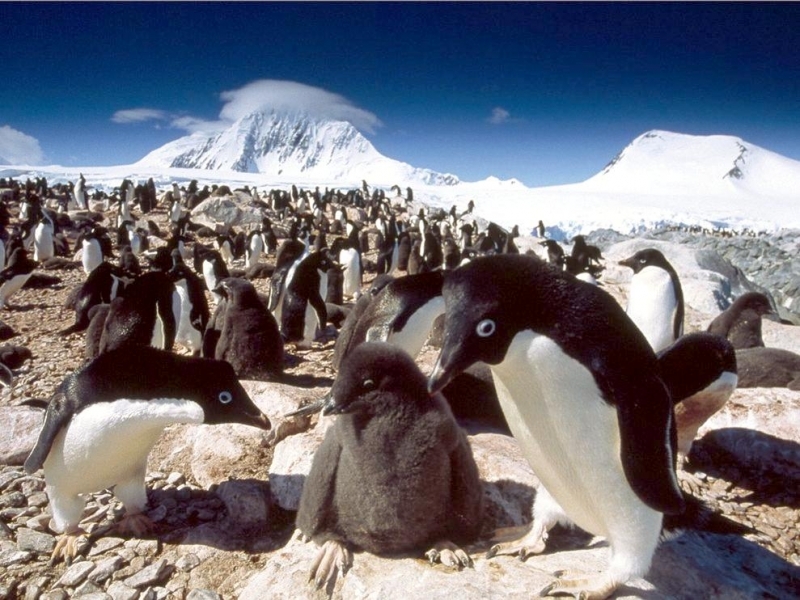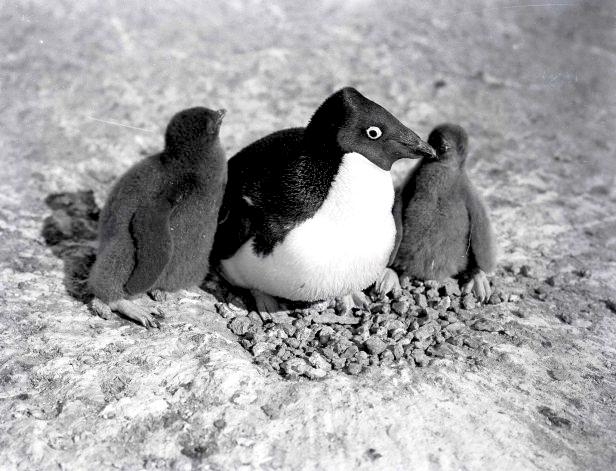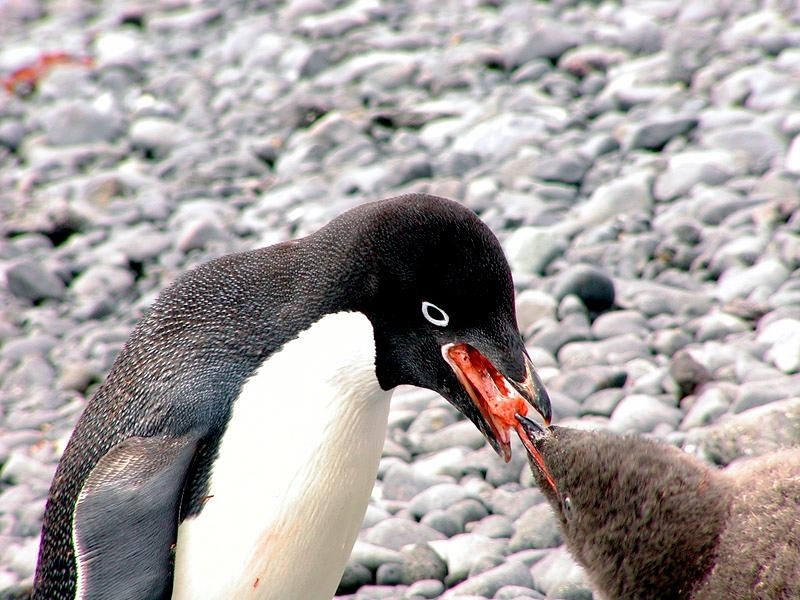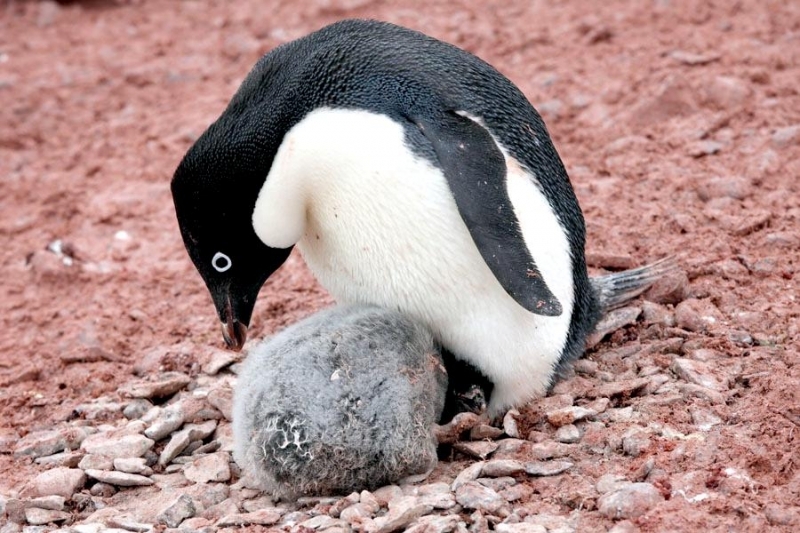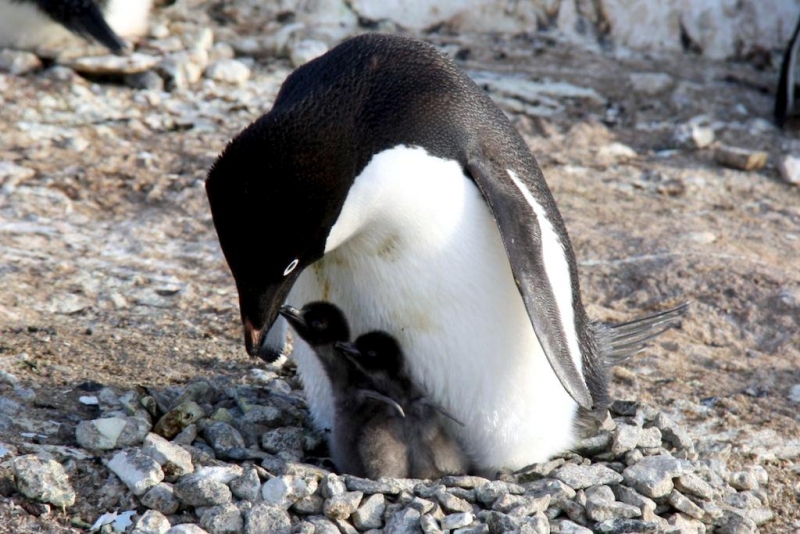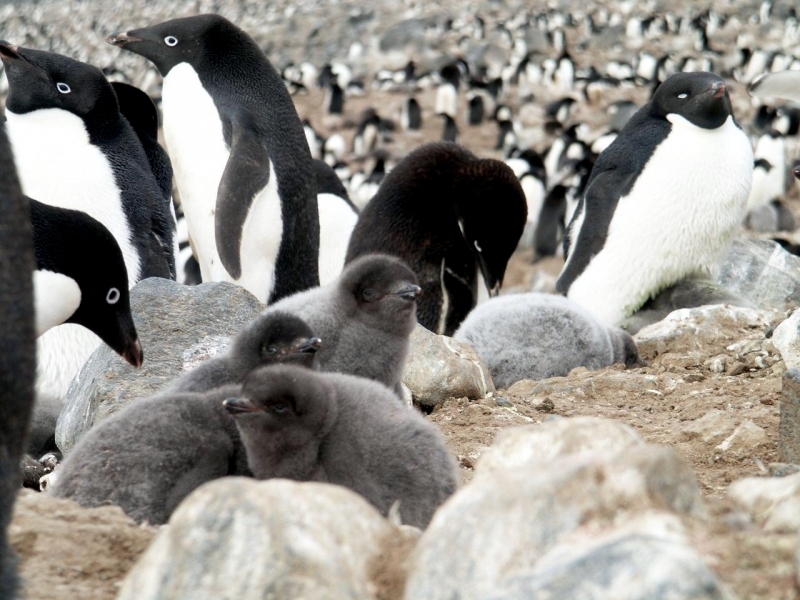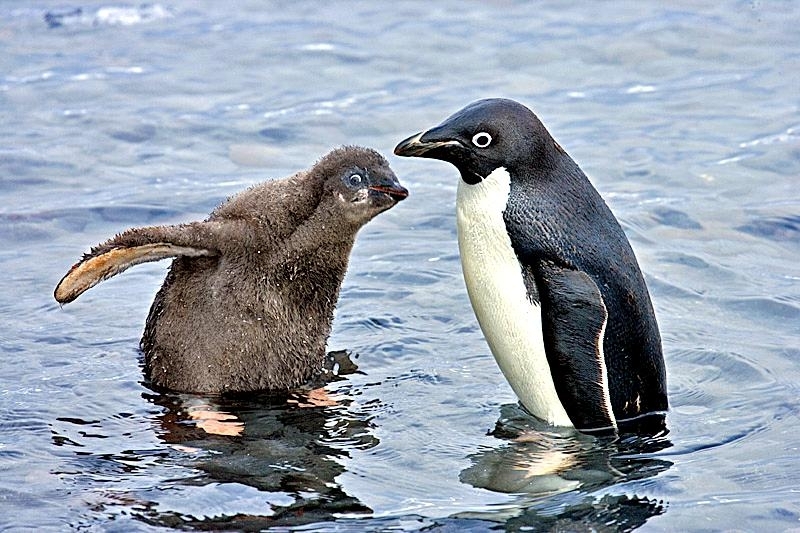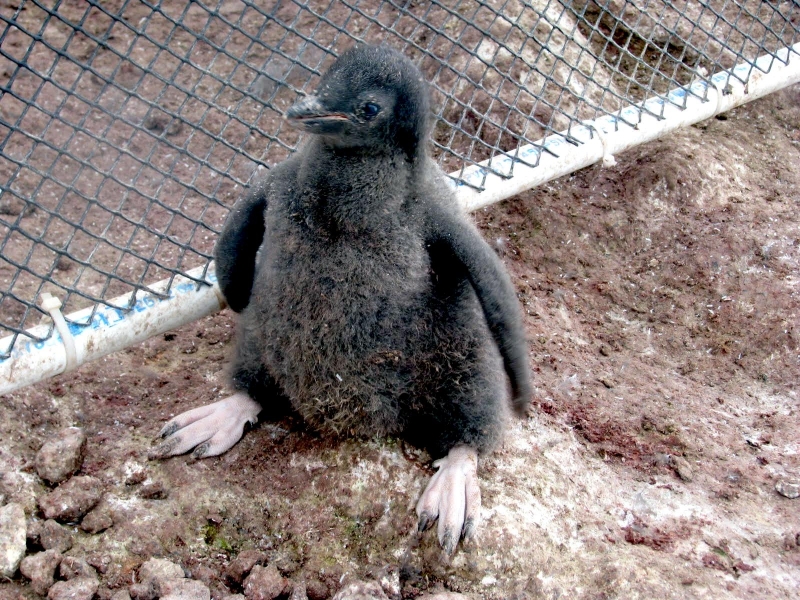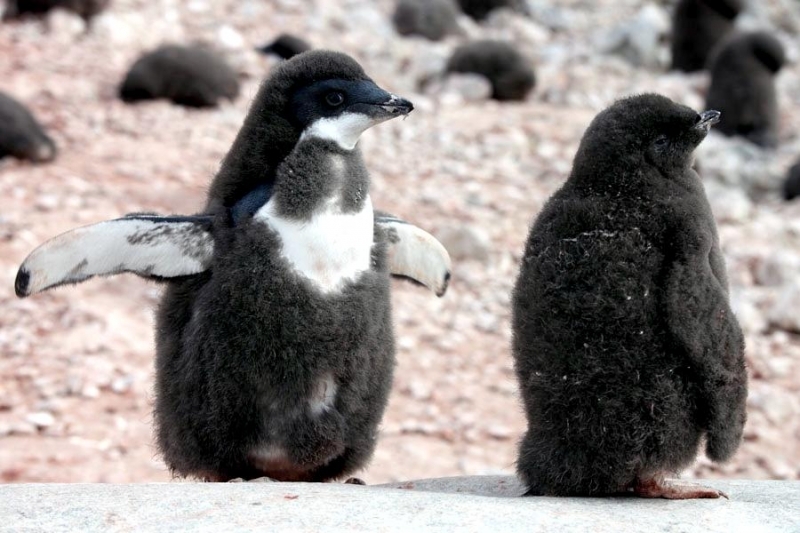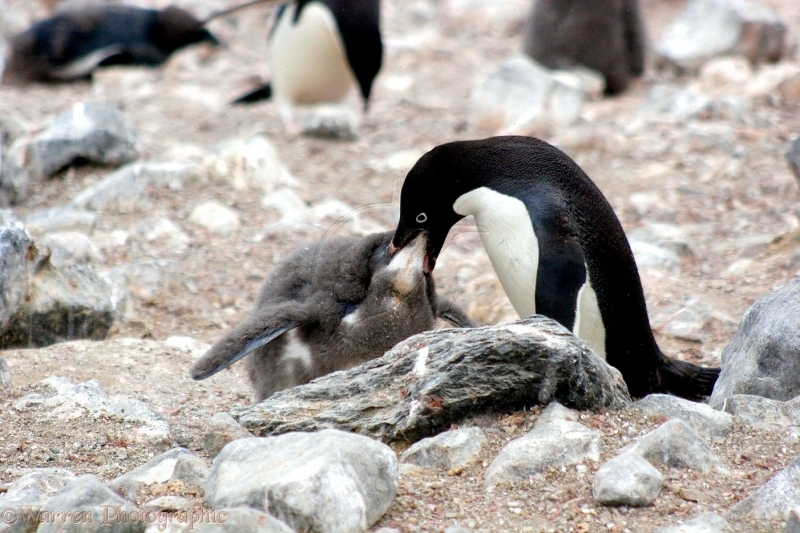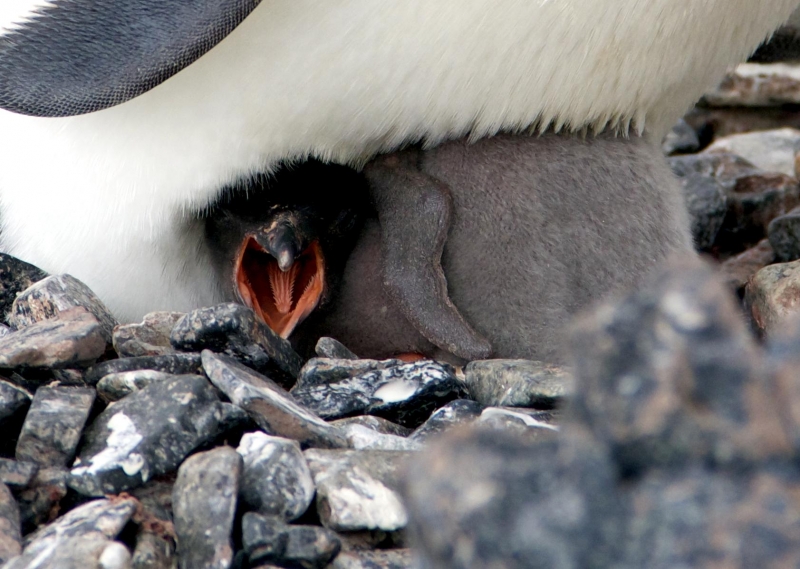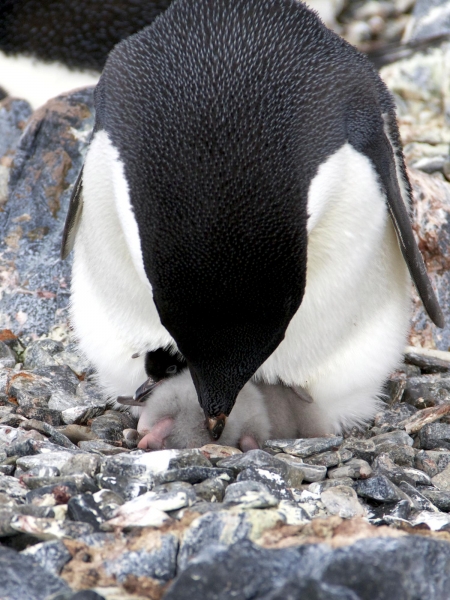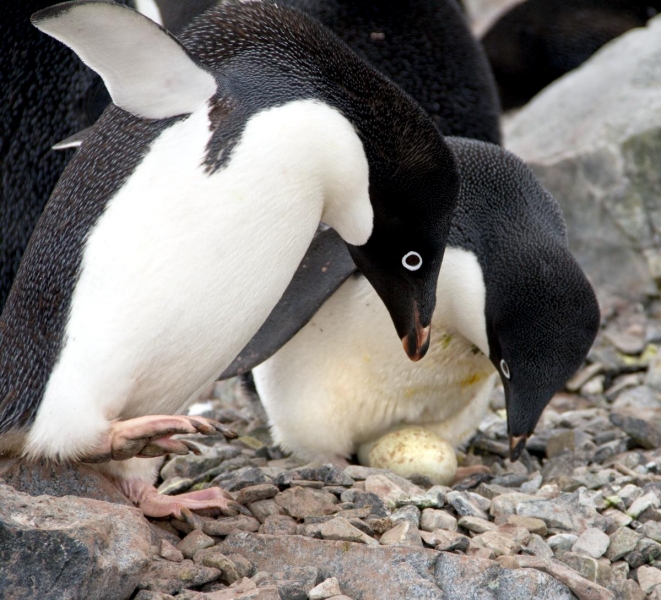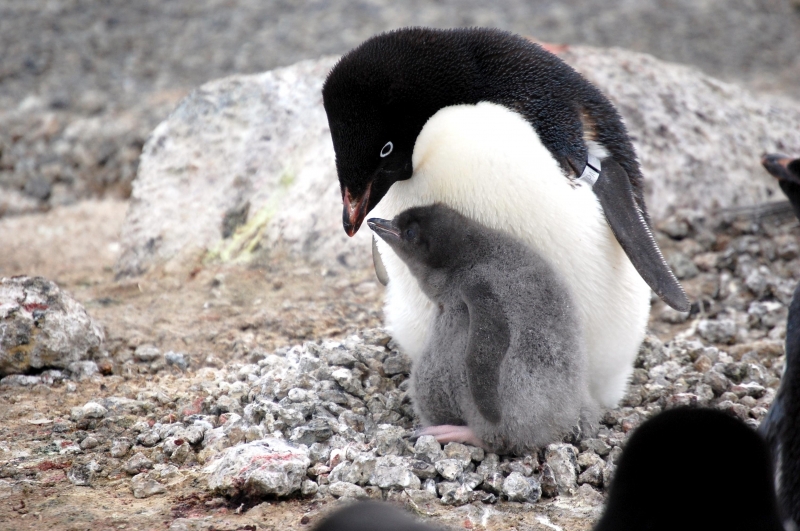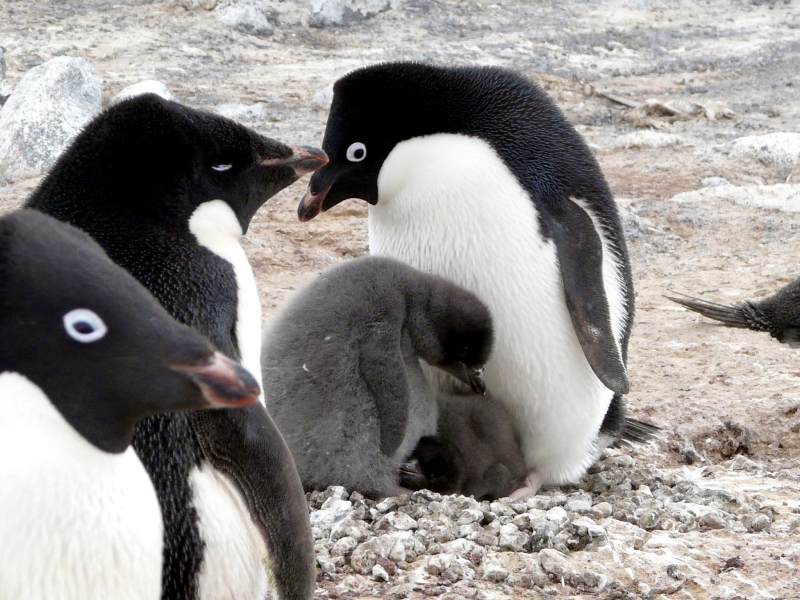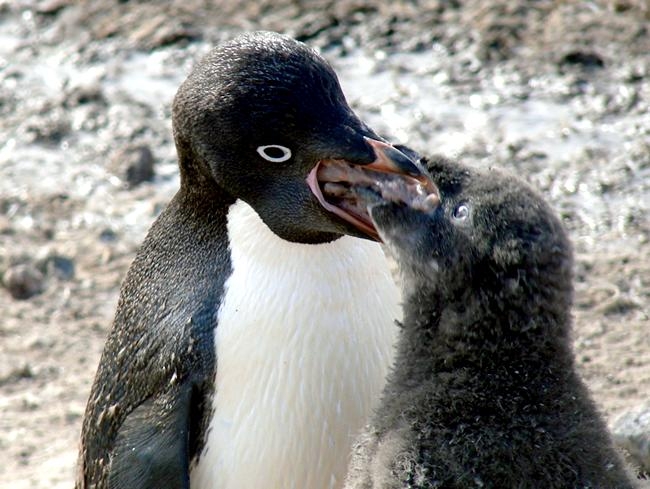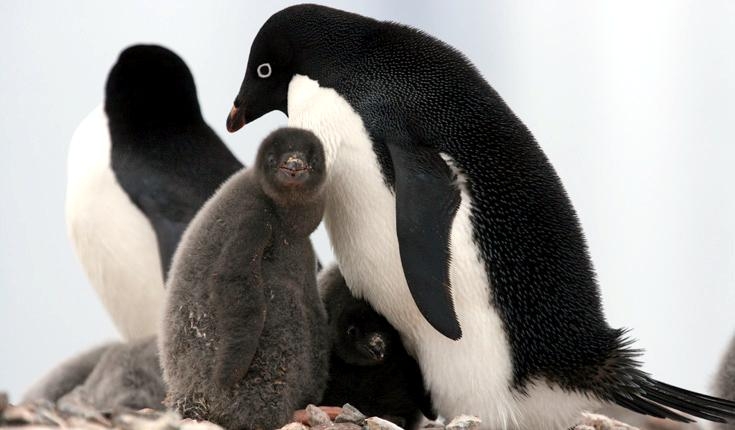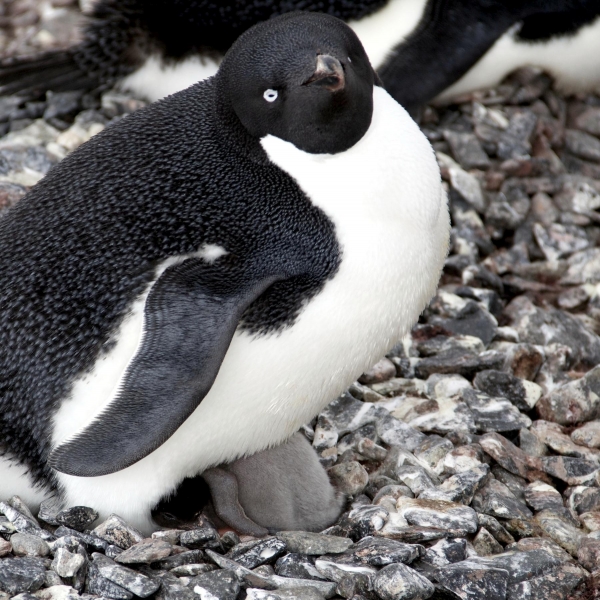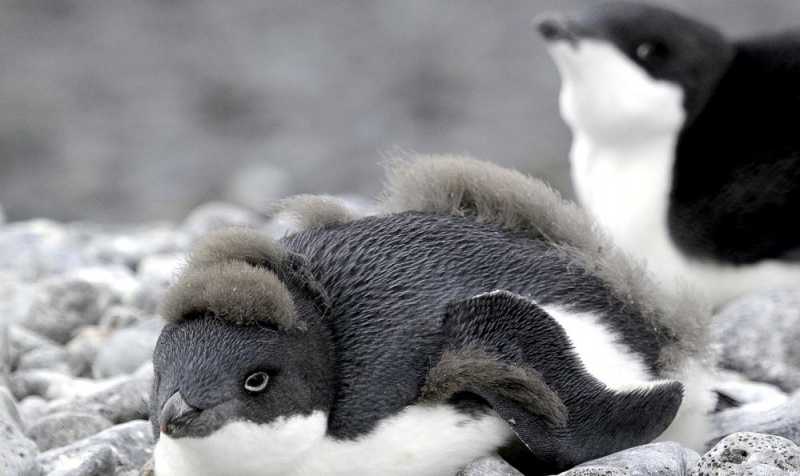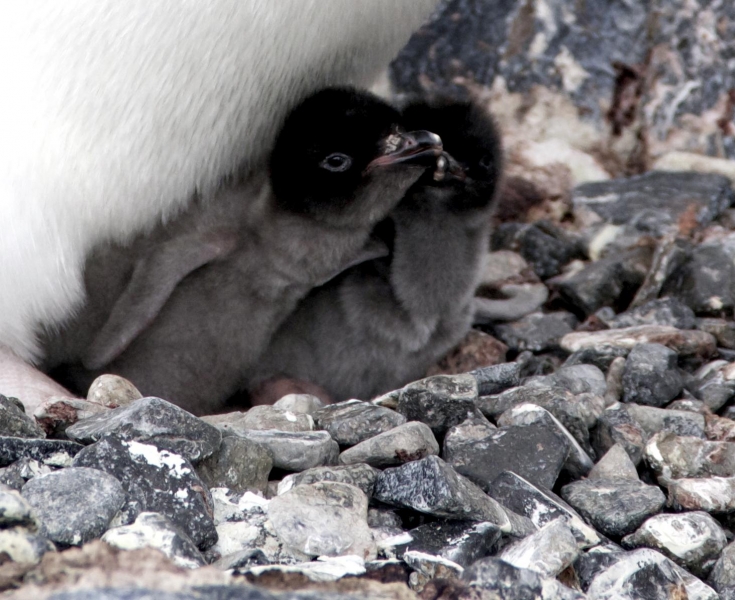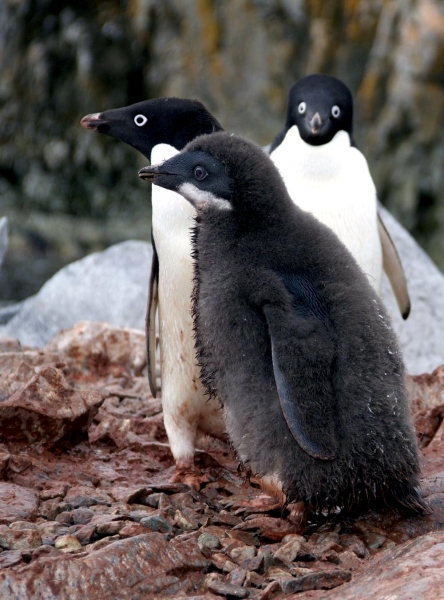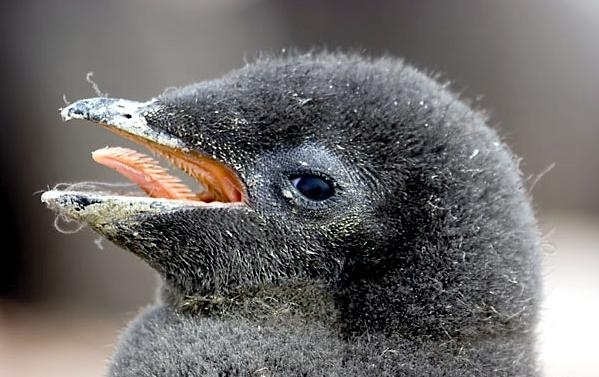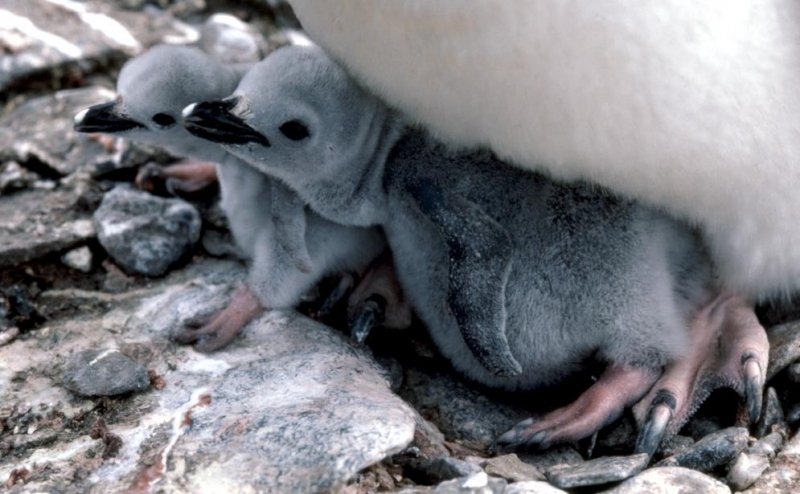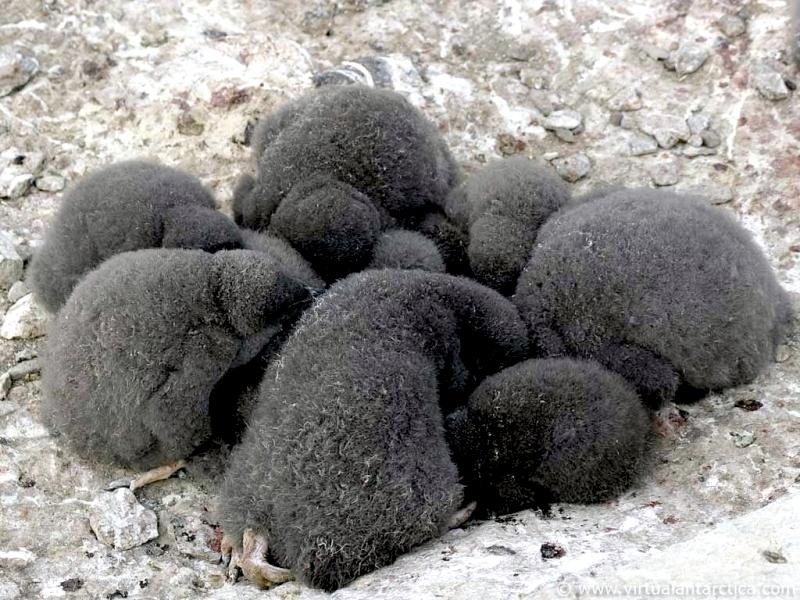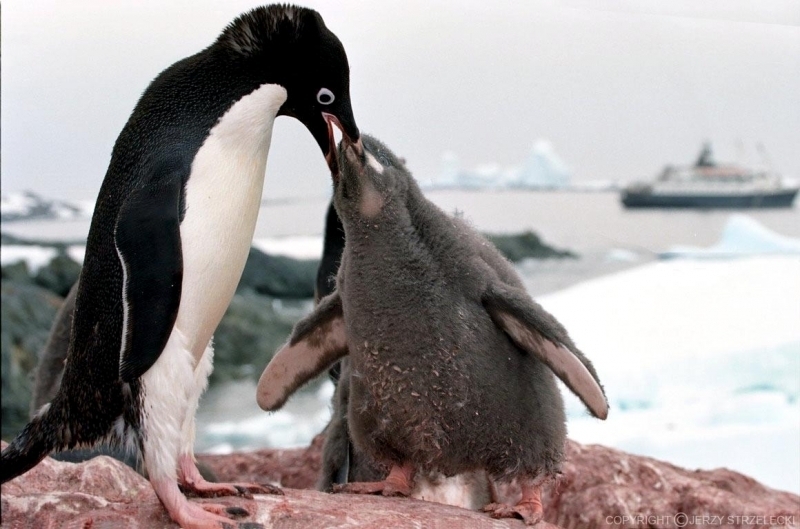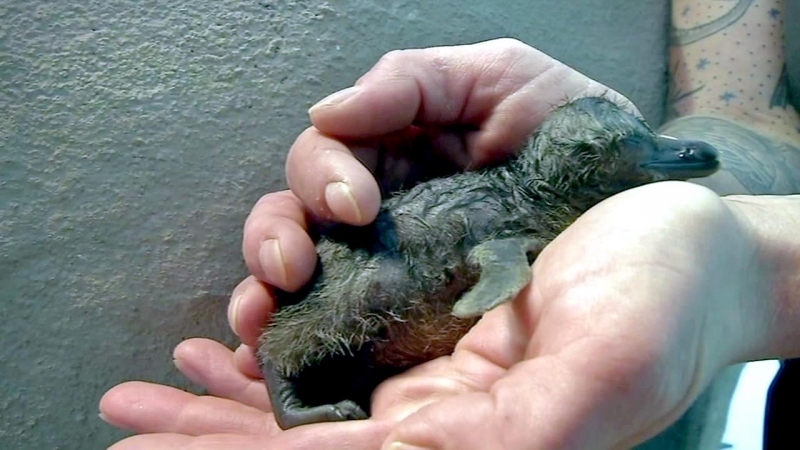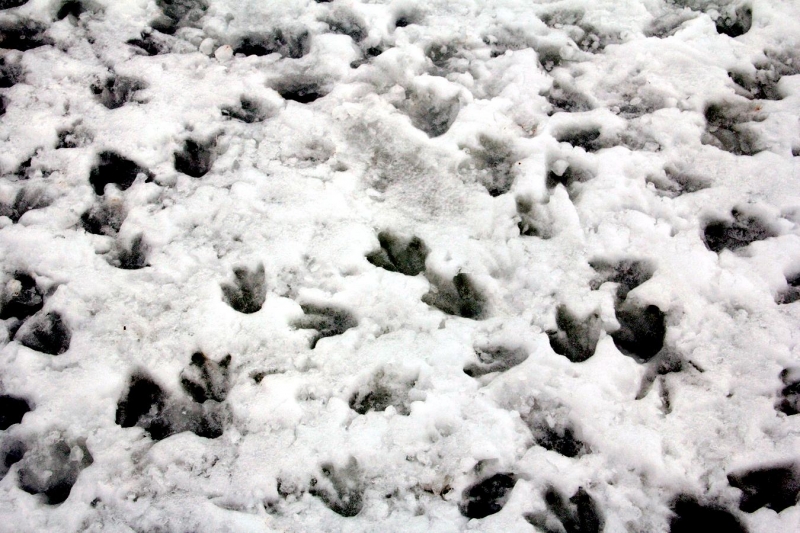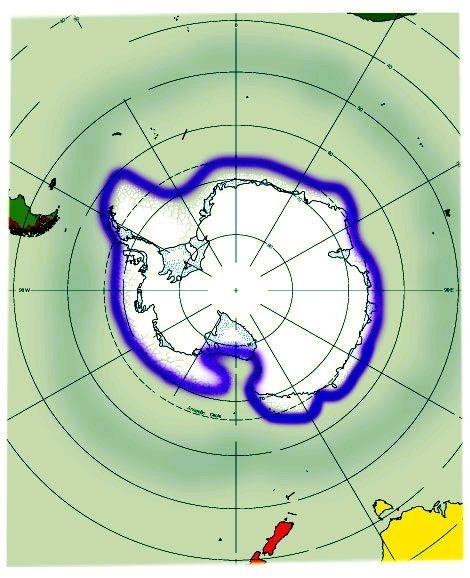“Pygoscelis adeliae”
Adélie Penguins are the quintessential tuxedo-sporting penguins. In 1830, French explorer Jules Dumont d’Urville who discovered these penguins, named them for his wife Adélie. The word Penguin first appears in the 16th century as a synonym for the now extinct Great Auk. When European explorers discovered what are today known as Penguins in the Southern Hemisphere, they noticed their similar appearance to the Great Auk of the Northern Hemisphere and named them after this bird, although they are not closely related. They have a solid black head, black back with blue-tipped feathers and a solid white belly. The Adélie also has a white ring around its eyes. Adults weigh between 4-6 kilograms and stand about 71 centimeters tall; males are typically slightly heavier than females. Juveniles have more blue in their feathers until they reach maturity at about 2 years of age. Chicks have dark gray heads and are covered in gray down, which insulates them from the cold on land. They are not yet waterproof until their down is replaced by waterproof feathers when they are almost 2 months old. Like other penguin species, Adélie Penguins are powerful swimmers and can reach swim speeds up to 15 kph. On average, they swim 4 to 7 kph. Adélies breathe when swimming by leaping in & out of the water. When they reach faster speeds, they are able to leap out of the water and onto pack ice up to 2 meters high. On average, Adélies dive to a depth of about 45 meters for about 1.5 minutes in search of prey, although they have been observed diving up to depths of 180 meters. Their large, dense bones help them stay submerged, however most foraging takes place near the surface. These seabirds can walk long distances at speeds that average 2.5 kph. They also conserve energy by sliding across the snow on their bellies using their feet to propel themselves forward. The Adélie Penguin is common along Antarctic mainland coast & surrounding islands.
Adélie Penguins primarily feed in coastal waters, although some Adélies from northern colonies may venture farther out to sea. They feed on small fish & krill. Southern Sea Lions, Leopard Seals and Killer Whales are known predators of this species at sea and Skuas are known to take eggs & chicks onshore. Males form breeding colonies near the Antarctic coastlines in mid to late October where they build a nest consisting of small stones, which allow good drainage during incubation so that the eggs remain dry & warm. When the females arrive, pairs begin mating, an event marked by loud, vocal displays by both males & females. The male stands on the female’s back while mating and a clutch of 2-3 eggs are fertilized and laid several days later in late November to early December. Adélies begin breeding behavior when they first visit breeding colonies, commonly their natal breeding colony, to claim a nesting site when they are 2 to 4 years old. About 67% claim sites within 200 meters of their birth site, a behavior known as natal philopatry. Between 100 and 250,000 pairs breed in each colony, which are commonly located near nutrient-rich ocean upwellings. When the chicks are around 2 months old, they are ready for independence and fledged or leave the nest. Parents share the incubation responsibilities and the initial chick-rearing phase when they take turns foraging for food during the first 3 weeks. This phase is followed by the “crèche phase” when the chicks form small groups while both parents forage.
